What Is Problem-Solution Fit? How To Achieve It?
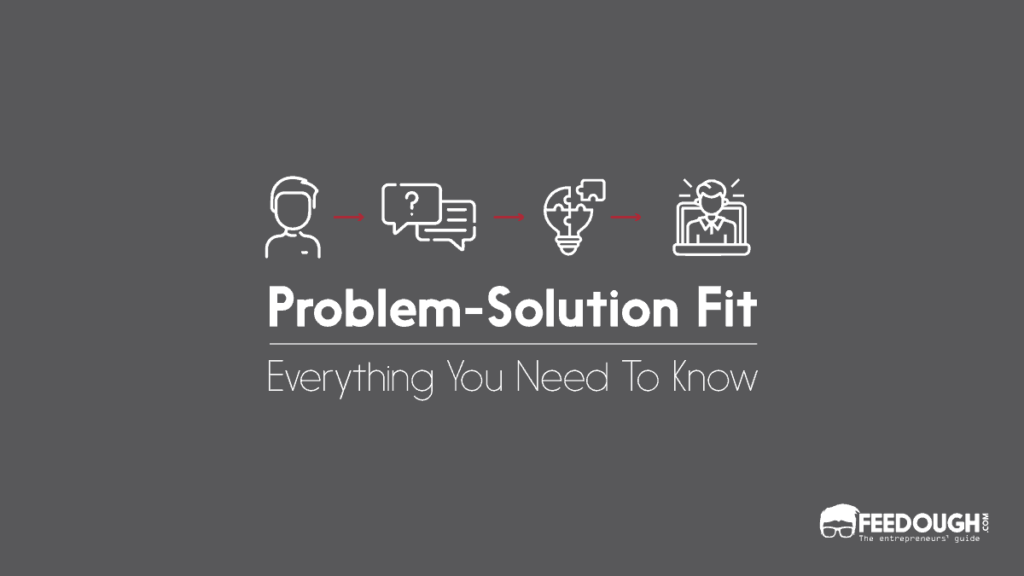
So you have a great idea for a new business. You’re excited to get started and make your mark on the world. But before you do anything, it’s important to make sure that there is a demand for your offering in the market.
The least glamorous but most important part of starting a successful business is determining whether your idea actually solves a real problem for people. This process is known as finding a problem-solution fit.
Here’s a guide explaining what problem-solution fit means, why it’s so important to the success of your new business, and how to achieve it.

What Is Problem-Solution Fit?
Problem-solution fit is a term used to describe the point validating that the base problem resulting in a business idea really exists and the proposed solution actually solves that problem.
The problem-solution fit is when you-
- Validate that the problem exists: When you validate your problem hypothesis using real-world data and feedback. That is, you gather information from real users to determine whether or not they care about the pain point you’re trying to solve.
- Validate that your solution solves the problem: When you validate that the target audience appreciates the value your solution delivers to them.
The problem-solution fit precedes the product development and forms the foundation upon which a company is built. It helps you answer the basics startup-related questions before you even start your startup.
- Do people actually have the problem that you think they have?
- How do they solve the problem now?
- Does your proposed solution make a meaningful difference?
Once you’re satisfied with the answers, you use this solution to develop a saleable product and start acquiring customers .
Why Achieving A Problem Solution Fit Important?
Achieving problem-solution fit is essential to the success of any new business.
Because without it, you’re essentially just guessing that your idea is going to work. And if you want to be successful, you need more than just a guess .
The problem solution fits help you-
- Get a better understanding of your target market: It helps you identify your target customers , who they are and what matters to them the most.
- Get a better understanding of the customer tasks and pain points: Only after getting into the shoes of the customers do you realise their real tasks and the problems that hinder their progress in completing the tasks.
- Get a better understanding of existing solutions and what they lack : It helps you understand what gaps exist in the market and how your business can fill those gaps.
- Build a solution based on real data : It gives you the information you need to build a solution that users actually want, rather than guessing their needs.
When Should You Look For A Problem-Solution Fit?
Ideally, you want to achieve a problem-solution fit before you start working on your product. This way, you can be confident that you’re solving a real problem that people actually care about. Otherwise, you risk building something that no one wants or needs.
This problem-solution fit forms the basis for your entire business. From your product development to your marketing and sales efforts, everything should be focused on solving the problem that you’ve identified.
How To Achieve Problem-Solution Fit?
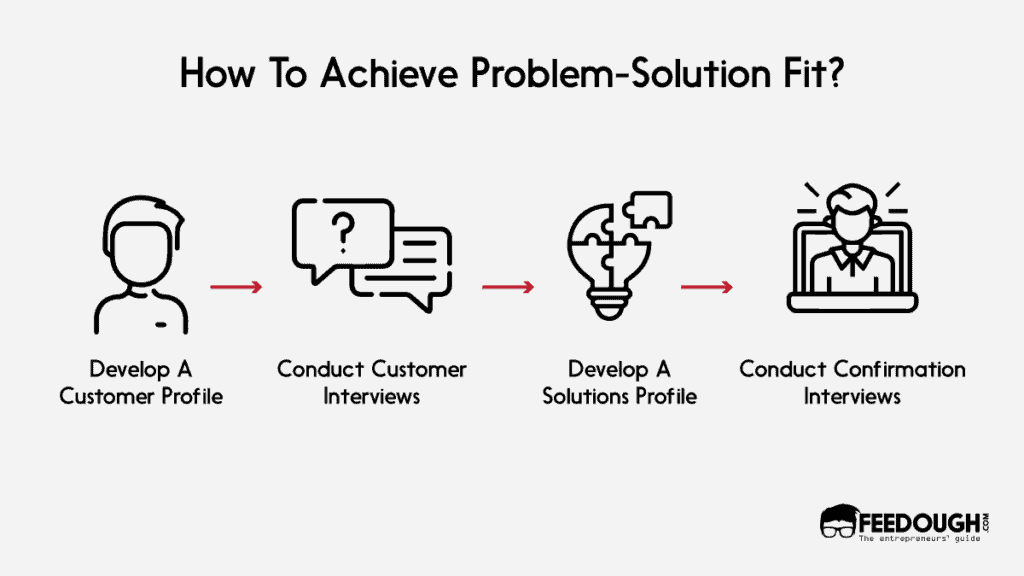
The key to achieving a problem-solution fit lies in identifying the right people to talk to, gathering data from them, and then analysing the results.
This is easier said than done, of course. But this can be done by following two simple steps –
Develop A Customer Profile
The customer profile section helps you to understand your target audience in greater detail. This process will give you answers to the most important customer-related questions that will take you closer to your offering –
- Who are they? (Persona)
- What jobs do they need to get done? (Jobs-to-be-done)
- What problems do they face while doing the job? (Pain points)
- What do they gain by completing the job? (Desired Outcomes)
The Customer Persona
The customer persona is a semi-fictional representation of your ideal customer based on market research and real data about your existing customers.
Creating a customer persona helps you understand your target audience better. It includes information like –
- Demographics: Age, gender, location, education, job title
- Psychographics: Lifestyle, values, interests, attitudes
- Behavioural patterns: Buying habits, online behaviour, communication preferences
The Job-To-Be-Done
Consider your customer’s job-to-be-done as the reason why they need your solution.
For example, imagine that your target customer is a busy professional who wants to increase their productivity. This “job” might include managing their email, calendars and social media accounts all in one place.
What are the challenges and frustrations your target customers experience while completing the job?
For example, busy professionals might find it difficult to keep track of their different accounts and feel constantly bombarded with notifications.
Desired outcomes
What are the desired results or outcomes your customer hopes to achieve by completing the job?
For example, they want to be able to quickly find the information they need and minimise interruptions.
Conduct Customer Interviews
The customer profile results in a hypothesis about the problem your target customers face.
You need to talk to actual people who match your persona to validate this hypothesis. This is done by conducting customer interviews, and its goal is to collect qualitative and quantitative data that will help you better understand your users’ needs.
Problem interviews are typically exploratory in nature. These are unstructured interviews in which you ask open-ended questions to better understand the problem.
Take this scenario, for example –
You’re building a productivity app for busy professionals.
Your previous hypotheses suggested that the primary challenge your customers face is managing their email, calendars and social media accounts all in one place.
To verify this hypothesis, you conduct exploratory interviews with a small group of users where you ask questions like – “Tell me about the biggest challenges you face at work”, and “How do you currently manage your email, calendar and social media accounts?”.
From the responses, you narrow down on the pain points and start to form a clearer picture of the problem.
This feedback helps you validate (or invalidate) your previous assumptions and makes it easier to develop a solution that meets the needs of your target customers.
Develop A Solutions Profile
The solutions profile describes the solution you plan to offer that addresses your customers’ desired outcomes. It results from your customer interviews and should be based on actual feedback, not assumptions.
You develop a solutions profile by answering:
- How do you help the customer get their job done?
- How do you address and solve their pain points?
- What are the desired outcomes for the customer?
A solutions profile might look something like this:
Our productivity app helps busy professionals manage their email, calendar and social media accounts all in one place. It offers a unified inbox that shows all your messages from different accounts in one place and allows you to switch between them with just a few taps quickly. Additionally, it includes a centralised calendar that lets you schedule meetings and appointments without having to switch between multiple apps. And finally, we provide tools for managing your social media accounts so you never miss an important update again!
Conduct Confirmation Interviews
Your solution profile is based on your customer interviews, but it’s important to validate your problem-solution fit with actual users before you start building anything. This is done using confirmation interviews.
Confirmation interviews are structured with a focus on testing the proposed solution. In these interviews, you focus on verifying the findings of your exploratory interviews along with the proposed solution.
This is done by asking more specific but open-ended questions like – “How would you feel if you had a unified inbox for all your email accounts?”, “What would be the biggest benefit of having a centralised calendar?”.
The goal of confirmation interviews is not to get detailed feedback on the proposed solution, but to validate that the solution solves the problem in a way that is valuable to the customer.
Problem-Solution Fit Examples
Every successful company today started with a problem-solution fit. Here are a few examples:
- Airbnb solved the problem of finding affordable accommodation by connecting people who need a place to stay with those who have an extra room.
- Uber solved the problem of getting a cab by creating an on-demand ridesharing platform that connects drivers with riders.
- Spotify solved the music artist’s problem of getting their music heard (without piracy) by creating a streaming platform that makes it easy for people to discover and listen to new music. At the same time, it solved the music listener’s problem of having to buy entire albums when they only wanted to listen to one or two songs.
- Google solved the problem of finding relevant information on the internet by creating a search engine that uses algorithms to rank websites based on their relevance to the user’s query.
- Facebook made it possible for people to connect with each other on a social platform, regardless of distance or location. It solved the problem of keeping in touch with family and friends through an easy-to-use online interface.
Problem-Solution Fit vs Product Market Fit
People often confuse the terms “problem-solution fit” and “ product-market fit “, but these are actually two very different things.
While problem-solution fit refers to validating that your solution solves a problem for your target market, product-market fit is about validating that there is actual demand for your product or service.
There are times when a company solves a real problem and develops a good solution, but is not able to get traction because their customers are not willing to pay for it.
Bottom-Line?
Achieving problem-solution fit is an essential part of the startup process . By taking the time to understand the problem and developing a solution that meets the needs of your target customers, you increase your chances of success.
Moreover, this approach helps you avoid building a solution that is not needed, and that will never be used.
As a startup founder , it’s important to understand that problem-solution fit is a continuous process. You’ll always be learning and improving as you grow, and it’s always important to validate your findings with actual users.
Go On, Tell Us What You Think!
Did we miss something? Come on! Tell us what you think about our article on problem-solution fit in the comments section.
A startup consultant, digital marketer, traveller, and philomath. Aashish has worked with over 20 startups and successfully helped them ideate, raise money, and succeed. When not working, he can be found hiking, camping, and stargazing.
Related Posts:
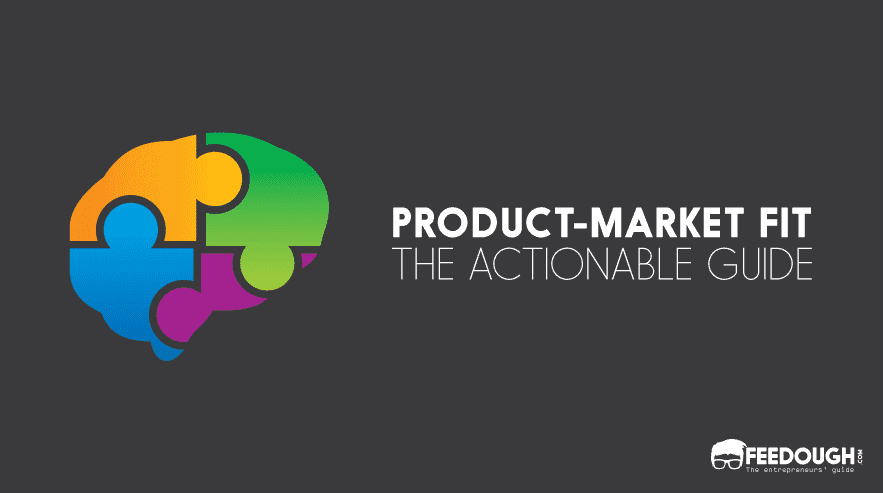
How To Find Problem Solution Fit For Your First Product
mins read ⋅
December 12, 2022

Finding the Problem-Solution Fit for your first product is not easy. You have no bearing on the right customer problem, no paying customers, and close to zero customer input while building the product. Unsurprisingly, one of the key reasons startups fail is “trying to build and sell solutions that customers don’t want.” According to a CB Insights report.
The Problem-Solution Fit process is a marathon of identifying customer problems whilst hustling to find your early adopters to get early traction.
Great founders recognise these risks and start small by working closely with a small set of “early-evangelists”. They find long-term customers to grow with.
In this post, I’ll simplify the theory behind Problem-Solution Fit, then I’ll show us a step-by-step process to find Problem-Solution Fit for your startup, and I’ll wrap up with steps to help you find your first set of evangelist customers.
Let’s get started…
Where Does Problem-Solution Fit in Your Startup Journey?
In The Startup Owner's Manual , Steve Blank highlighted all successful startups start with learning about problems:

The first stage of a successful startup begins with finding a Problem-Solution Fit. This is when founders have discovered a deep customer problem in an underserved market. There is a lot of pivoting and working closely with a few sets of customers.
Then they move on to Product/Market Fit, where the startup has found a way to sign up customers, retain them and get healthy revenue in a large enough market.
Lastly, the startup moves into the Scale stage, focusing on expansionary growth and telling even more customers about their products.
So, What Is Problem-Solution Fit?
Problem-Solution Fit (PSF) is when founders have discovered a deep customer problem in an underserved market. This stage is generally very early and often in the seed or pre-seed stage.

Take Airbnb as an example. The founders identified a problem when they started renting out their rooms to earn extra money. Then, they created a platform to help even more people earn extra income—the solution. Their Problem-Solution Fit moment came when they received their first bookings during the Industrial Design Conference in 2008, then again via the Democratic National Convention in Denver.
They learnt that large events with hotel shortages were their secret sauce for growth. Armed with the problem-solution opportunity, they applied for Y-Combinator and got in. They expanded into New York (where there are always hotel shortages), and the rest is history.
Every successful startup starts from finding Problem-Solution Fit ➡️ then Product-Market Fit ➡️ then Scale.
Where are you now on that journey?
So, How Do You Find Problem-Solution Fit?
As a founder, the moment you’ve thought of your idea , you’ve subconsciously started looking for PSF. The Problem-Solution Fit takes shape slowly from a blurry gassy form to a fluid liquid form and eventually a tangible, solid form. Some founders do this consciously, some intuitively:
Blurry Gas Form :
In this form, founders identify a problem and a solution that makes perfect sense in their minds. They either write it down or keep it in their minds. The product lives in the founder’s imagination, without evidence.
Fluid Liquid Form:
Next, the founders identify a solution and ascertain whether their audience resonates with it. They’ll attempt to attract early-evangelists and iterate through landing pages, demonstrations, or prototypes.
Tangible Solid Form:
In this form, founders leverage demonstrations from digital prototypes, videos, sticky-tape solutions, and experiments to assess the efficacy of their proposed solution. The savvy founders will try to convert some early-evangelists into paying customers.
During these 3 phases, it’s best to use a tool to capture the idea as it evolves from gas, liquid and solid forms. It’s important to highlight the assumptions as the idea evolves and validate them. Here are 3 great tools to help you with this:
The Opportunity Canvas Tool
1. Jeff Patton’s Opportunity Canvas is my favourite tool as it focuses more on product discovery and customer problems.

The Lean Canvas Tool
2. The Lean Canvas is always a great choice for startup founders. The Lean Canvas is more holistic for your startup, whilst the Opportunity Canvas focuses more on the product.

The Business Model Canvas Tool
3. If you’re building a B2B product, the Business Model Canvas is a great option as it highlights partner channels and key resources you need to get you started.

Write down your idea, and spend the time to validate your problem-solution with your early customers. From my experience, it takes 3 -5 rounds of validation to arrive at a clearer understanding of the problem, the customer, and the solution.
Problem-Solution Fit vs Product-Market Fit
Problem-Solution Fit and Product-Market Fit are often a point of confusion for early founders. On the surface, these two definitions are virtually identical = find a valuable product in a big enough market. However, the solutions in the Problem-Solution Fit stage are often different to those in the Product-Market Fit stage.
This is because Problem-Solution Fit focuses on a tiny group of early-evangelists who are comfortable with missing features, as long as it solves their core problem. (Bad UX, no onboarding, and manual work-arounds are part of the fun!)
Whilst solutions during the Product-Market Fit stage focus on selling your product to a larger mainstream market. These solutions need to have a more robust set of features. (Reliability, Security, Reporting, and a decent UX is a common ask for these customers).
Problem-Solution Fit Example
A great example I’ve experienced recently was assessing a content moderation tool for the company I currently work for.
My company is on a mission to create the most trusted destination on the internet. We want to moderate all content hosted on our platform to protect visitors.
Our team scoured the internet to find a tool that fit our requirements. After weeks of searching, we came across a startup that friends in the industry highly recommended. Their product was easy to use, had an AI engine that makes our lives easier, and had a few customers using it - a great demonstration of Problem-Solution Fit!
However, due to the size of our remote-first workforce, information security was a key need for us. We require features like Single-Sign-On and specific security certifications that the startup didn’t offer.
As a result, we ended up choosing another tool with fewer features but focused on a more robust set of features on information security. When we broke the news to the founders, they were disappointed but understood their product wasn’t right for us.
We departed amicably, and the startup will reach out again when they have the security features we require.
Now… could the startup have built the security features that we need? Absolutely.
But more importantly, was my company the right customer for them? Probably not.
They were focused on smaller startups with different sets of needs. To change their product just for my company would’ve meant overheads that were not worth it for them.
The moral of the story is that “everyone” is not your customer. When you’re trying to find Problem-Solution Fit, your customers must be your “early-evangelists”—these are customers that would scream and shout about your product.
Once you’ve found a strong base of “early-evangelists" you can move into a bigger market to find Product-Market Fit.
Here is a quick comparison between your PSF customers vs your PMF customers:

Selling to your early evangelists
Your early-evangelists are the catalysts of your product. These customers are willing to risk buying an unfinished product to gain an early competitive advantage or purely for bragging rights. (P.s. Bragging rights are never long-term strategies but it can get you off the ground).
- In the B2C space, they might be your techy friends who are always trying out new things.
- In the B2B space, this could be an executive testing a new business opportunity or a head of a function trying to solve a burning problem.

The ultimate test for early-evangelists is their willingness to pay for your product. When presenting your product idea to your ‘evangelists’— don’t be afraid to ask for a sale. If there are signs of hesitation (from both sides), you are not solving a problem deep enough. Go deeper and ask: “What would make you pay a small deposit for this product?”
Early-evangelist hierarchy of needs
Like a product, the early-evangelist goes through 5 stages of pain. The ideal customer is someone who is at the highest level and has the budget ready to buy something to solve their problem.
These are the five stages of pain your early-evangelists goes through:
- Pain Level 1: They have a problem or a need
- Pain Level 2: They understand they have a problem (or you’ll need to help them discover a problem)
- Pain Level 3: They are actively searching for a solution to the problem, and have a timeline for finding it
- Pain Level 4: They problem is so painful that have cobbled together an interim solution
- Pain Level 5: They have committed budget or can quickly acquire budget to purchase a solution

The closer to the top of the pyramid, the more likely they will buy your product, and even spread your vision for you.
So, where do these early evangelists hang out?
Let’s think about the last time you were in a market to purchase a property or looking for a place to rent. Where did you go?
You’d probably start with a google search on a suburb or use a real estate website. You might ask your friends and family or even walk into your local real estate agency.
If you’re looking for your early-evangelists, they won’t come to you directly—you need to go where they are looking. Cold-calling rarely works because it’s hard to identify your customer's pain level in one single call. Better to invest your luck in one of the five strategies below.
These are 5 Key Strategies To Find Early-Evangelists:

1. Leverage your network
Ask your existing friends, family, colleagues, investors or even LinkedIn to connect with people experiencing the problem you’re trying to solve. Offer to advise, free work, kudos, or anything your network finds valuable in return.
Practice give-give-get. Always give more value to your network than you get from them, and people are willing to help you.
2. Find the virtual “Gathering places”
These are online or offline gatherings where your early evangelists go to find a solution to solve their problems. Places like forums, social media groups, Twitter, slack groups or even shared offices.
Be active and generate conversations around the problem you’re trying to solve, and of course, give-give-get.
Attend conferences, seminars, trade shows and meetups where your early-evangelists go for pleasure or work. Or, if there are no events for your problem space, create one yourself and use your network and the ‘gathering place’ above to spread the word.
You’ll make a conversation topic that shows you deeply care about helping your customers solve their problems.
Find a way to access the attendees' list so you can reach out beforehand and set up 1:1 time with potential prospects. The networking starts BEFORE the event begins.
4. Paid advertising
In some instances, paid advertising might be a great way to get your startup in front of people. I’m broadly using the term ‘paid advertising’ to involve more than just google ads. Think about paid sponsorships, paid ads in a newsletter, paid influencers, or anything that you can use the money to acquire attention. Make sure you have a clear “what’s-in-it-for-me” call to action to turn your prospects into conversations.
5. Agents, partners or consultants
For more complex industries, you might have to go through agents, consultants or partners that already have an established footing with your customers.
A typical example is breaking into the enterprise sector would require you to go through a few ‘approved’ vendors for you to have a ‘ticket to play’. You can sell your product through existing vendors/consultants or build apps through a marketplace like Slack Apps or Salesforce Marketplace. Partnerships are great for getting your foot in the door and finding early customers.
Play long-term games with long-term people. Grow with your early evangelists, and they’ll spread your product for you.
Finally, develop the product for the Few, not the Many
The sweet spot for startup success lies in the intersection of a meaningful problem and a right solution. In a startup, the first product is not designed to satisfy a mainstream customer, and that’s okay. No startup can afford to build a product that suits every customer and be successful at it.
All great products starts with finding a Problem-Solution Fit. Be prepared to pivot, persevere and even kill off bad ideas. Always remember:
- You’re creating a product for your customers, not your ego.
- Find your early-evangelists to pay for the problem you solve, and solve it well.
- As a founder, time is your most valuable resource, not money. Do everything to preserve it.
On that note, happy building!
Dave is a global product leader with 15 years of experience working for brands like Airtasker, Linktree, CBA and Expedia. He also lectures at General Assembly, Harvard Innovation Labs and Product Academy to help founders build world-class products.
More resources

TAM, SAM & SOM: How To Calculate The Size Of Your Market

Unicorn Companies Explained: How Startups Achieve the $1 Billion Valuation

Defining Your Value Proposition For Early-Stage Startups
Antler insights delivered to your inbox.
Sign up to get relevant information delivered right to your inbox. Learn about Antler and get additional insights on building early-stage companies.


The Ultimate Guide on Problem/Solution Fit: How to Create a Product Customers Cannot Refuse

What Is Problem-Solution Fit?
A startup goes through three distinct stages

Stage 1: Problem/Solution Fit
Key question: Do I have a problem worth solving?
The first stage is about determining whether you have a problem worth solving before investing months or years of effort into building a solution.
While ideas are cheap, acting on them is quite expensive.
A problem worth solving boils down to three questions:
1. Is it something customers want? (desirable)
2. Will they pay for it? If not, who will? (viable)
3. Can it be solved? (feasible)
During this stage, we attempt to answer these questions using a combination of qualitative customer observation and interviewing techniques From there you derive the minimum feature set to address the right set of problems, which is also known as the minimum viable product (MVP).
Stage 2: Product/Market Fit
Key question: Have I built something (enough) people want?
Once you have a problem worth solving and your MVP has been built, you then test how well your solution solves the problem. In other words, you measure whether you have built something (enough) people want.
Stage 3: Scale
Key question: How do I accelerate growth?
After product/market fit, some level of success is almost always guaranteed. Your focus at this stage shifts toward growth, or scaling your business model.
Problem/Solution Fit (not Product/Market Fit) is the first significant milestone of a startup.
Getting to product/market fit (the inflection point in the hockey stick curve) takes roughly two years, and 80% of products never find it. At this rate, not counting downtime between ideas, finding a good idea could take up to 10 years!
In contrast, it takes roughly 3 months to achieve problem/solution fit. In the same 2-year period, you could fit eight Problem/Solution Fit iterations -- potentially raising your odds of finding a successful idea by 8x.

Before investing months or years of effort towards building a product, the first step is determining if your product is something worth building in the first place. You do this by validating "sufficient demand" for your product before building your product.
That is the essence of Problem/Solution Fit.
How Do You Achieve Problem/Solution Fit?
The counter-intuitive bit is that you can demonstrate demand for a product without a working product. How do you get people to buy a product before it's built? By selling them a promise of something better.
Think back to a new product launch, like the iPhone. Buying the first iPhone required a leap of faith because nothing was remotely like it. If you were one of the early adopters, like me, who stood in line to buy the first iPhone, you didn’t get to first test-drive the iPhone. You probably saw Steve Jobs demo the phone on stage, fell in love with the promise of the product, and decided to buy the product .
It follows that what customers buy isn't a product but a promise of something better. You don’t need a working product to promise something better. You need an Offer .
What is an Offer?
An offer is used to test interest for your solution before building it and should come before your MVP (Minimum Valuable Product) .
Mafia offers, teaser landing pages, smoke tests, and crowd-funding campaigns are all examples of offer types you can use at this stage. You use your offer to test for customer pull and refine your initial product specification (or minimum viable product).
An offer is made up of three things:
1. Unique Value Proposition (UVP)
Getting your customer’s attention is the first battle. This is the job of your UVP which makes a promise of something better.
Once you have their attention, the next step is convincing your customer that you can deliver on your promised UVP. And here’s the counter-intuitive bit. This is not the job of a working product either, but a demo.
3. Call-to-action (CTA)
Once a customer buys into your demo, the last step is a specific call-to-action (CTA) that you want your customers to take. The goal here is to get as close to a paying customer as possible.

Customers then don't buy working products but an offer .
This insight is key to acquiring customers without a product. It opens the door to using a Demo-Sell-Build strategy.
Demo-Sell-Build
The old way of launching a product started with building it, then demo'ing it to customers towards making a sale: Build-Demo-Sell.
The new way of launching products flips the order where you start by first selling your demo. If you can't sell the demo, why build the product?
This is the Demo-Sell-Build approach.

Not convinced yet?
- If you've ever backed a crowd-funding campaign, you bought an offer, not a finished product.
- Selling an offer vs. a finished product isn't just relegated to smaller purchases. Tesla sold their initial cars using an offer that required a $5,000 down payment and a $45,000 wire transfer within ten days to reserve the car.
- Selling an offer isn't just relegated to B2C products either. As much as you'd like to close a big B2B deal immediately, the more complex the sale, the more complex the sales process. You have to first sell the UVP, then the demo to multiple parties, and finally have a pricing discussion with the right buyer. This can take several weeks to several months. If you don't manage to sell the offer, your product never reaches the pilot stage.
Contrary to popular belief, you never need a finished product to close a sale with an early adopter . Depending on your product’s technical risk (feasibility) level, you may sometimes need a working prototype for your demo but don’t assume this unless your customers specifically ask.
How Do You Build an Offer?
There are several different ways you can assemble and test offers. I’ve listed some of the most commonly used offer campaign recipes below:
- Landing Page
- Crowdfunding
- Direct Sales
- Mafia Offer
I recommend everyone start with a Mafia Offer.
What is a Mafia Offer?
A mafia offer is an offer your customers cannot refuse — not because you strong-arm them but because you create a compelling offer that
- nails your customer’s top problem(s),
- breaks their old way (existing alternatives),
- promises a better outcome,
- demonstrates how your solution delivers a better outcome,
- provides a clear way for them to get started.
You can expect an 80+% conversion from sales-qualified leads to customers.
How do you build a Mafia Offer?
Here's the high-level process I cover in my Demand Validation Playbook :

Building a mafia offer is a three-step process:
1. Problem Discovery - Understand your customers better than they do.
2. Solution Design -Design a solution to cause a switch
3. Offer Delivery -Assemble an offer they cannot refuse
How do you know when you have achieved Problem/Solution Fit?
You have Problem/Solution Fit when you can demonstrate
- sufficient and repeatable demand through sales
- for a product you know you can build,
- at a price point that makes your business model work,
Qualitatively, it's when you go from hoping people will buy your product to knowing they will.
To measure sufficient demand you should chart out a Traction Roadmap .
All Articles on Problem/Solution Fit
This is a complete list of articles I have written on Problem/Solution Fit.
Join thousands of founders for battle-tested recipes, strategies, and how-tos for achieving product/market fit systematically.
SHARE THIS ARTICLE ON:
Continuous innovation foundations.
You'll receive one short email every three days for a month and get access to the online Lean Canvas tool. You can unsubscribe anytime.
.png)
Startup Resources Page
What is problem-solution fit, daily 60 second startup advice what is problem-solution fit.
Hello folks! We are here with another episode of "Daily 60 Second Startup Advice." In the ever-evolving landscape of innovation and entrepreneurship, one crucial step on the path to success is often overshadowed by the allure of the final destination: Product-Market Fit . We're talking about the Problem-Solution Fit, an essential precursor that paves the way for reaching that coveted destination.
Imagine trying to fit a square peg into a round hole – it's an apt metaphor for the challenges that arise when attempting to align a problem with its ideal solution. However, as we delve into this critical phase, you'll come to understand that when the right fit is found, it's like the missing piece of a puzzle sliding into place.
Problem-Solution Fit holds the key to unlocking innovation and tackling real-world challenges, whether they are intricate business dilemmas or everyday inconveniences. So, let's embark on this journey of exploration, experimentation, and innovation, where we will unravel the intricacies of Problem-Solution Fit and how it propels startups toward the ultimate destination of Product-Market Fit .
Problem-Solution Fit: The Foundation of Innovation for Startups
The journey begins with recognizing that problems exist everywhere, both in the business world and our daily lives. These problems are like puzzles waiting to be solved.
In our 7 Fit Framework Towards Product-Market Fit , we list Customer-Problem Fit as the first step in achieving the 3 pre-launch fits, inspired by the Design Thinking . Defining the early customers and their problems
However, as anyone who's attempted to fit a square peg into a round hole knows, finding the perfect match isn't always straightforward. This is where Problem-Solution Fit comes into play. It's the art of aligning a problem with its ideal solution, and it forms the very foundation of innovation. In the world of startups and product development, understanding Problem-Solution Fit is like having the key to a treasure chest. It's about identifying a genuine problem, one that people truly care about, and then crafting a solution that not only addresses the issue but does so in a way that resonates with your target audience. It's about making sure your square peg not only fits but also serves a purpose in that round hole.
As a startup team, you also need to make sure that you have the necessary resources to build a "viable" solution. So the critical question here is, is your startup team able to feasibly build a viable solution? To answer this question; you firstly need to apply a feasibility assessment by analyzing your own resources and competencies. Secondly, you need to explore if the solution you build with your own resources are making your customers happy.
Get it Now!
Free guide how to validate your startup idea in 6 weeks.

The Art of Exploration: Uncovering Opportunities through Experimentation
To find Problem-Solution Fit, you must embrace the spirit of exploration and experimentation. It's about venturing into the unknown, testing hypotheses, and being open to failure as a stepping stone to Product-Market Fit . If you want to build one of those startups solving real problems, you need to be open for customer feedback that will trigger many iteration (a.k.a test-measure-learn) loops. This is where creativity flourishes, and breakthroughs happen. Think of it as trying various shapes and sizes of pegs until one seamlessly fits into the round hole. You might not get it right the first time, but each attempt brings you closer to that perfect match. Through experimentation, you'll not only refine your understanding of the problem but also gain insights into what works and what doesn't in your pursuit of a solution.
Overwhelmed with the number of Know-it-all Mentors on Social Platforms? See How You Can Ben efit From St artup Coaching
The innovation puzzle piecing together the solution.
Problem-Solution Fit is like solving a complex puzzle, with each piece representing a part of the overall solution. As you explore and experiment, you'll gather these pieces, and slowly, the picture will become clearer. This phase involves iterative development, refining your solution based on feedback and real-world testing. Innovation doesn't occur in isolation. It's a collaborative effort that often requires different perspectives and skill sets. Surround yourself with a diverse team that can bring together these various pieces of the puzzle. Each team member contributes to finding the right fit, ensuring that every aspect of the solution aligns perfectly with the problem.
Trying to understand your startup's maturity level in terms of Product-Market Fit?
Find out which questions you need to ask yourself!
Problem-Solution Fit vs. Product-Market Fit
Problem-solution fit is the foundation for product-market fit . Without problem-solution fit, it is unlikely that a product will achieve product-market fit.
Here are some key differences between problem-solution fit and product-market fit:
Problem-Solution Fit is achieved during the pre-launch phase . This means that before the actual product is launched, a startup needs to achieve Problem-Solution Fit. A startup searches for Problem-Solution Fit with the help of iterations they apply on their MVP.
Problem-Solution Fit is a binary proposition, while Product-Market Fit is a spectrum. A product either solves a problem or it doesn't. Product-Market Fit, on the other hand, can range from a small group of passionate users to a large and growing customer base.
Here are some examples of products that have achieved Problem-Solution Fit:
The iPhone solved the problem of smartphones being difficult to use.
Spotify solved the problem of people having to pay for individual songs.
Dropbox solved the problem of people losing their files.
Slack solved the problem of teams communicating and collaborating effectively.
The way to grow and achieve Product-Market Fit (PMF) for a startup passes through effective cus tomer acquisition for which Problem-Solution Fit is a pre-requisite.
The startup scene is home to the best Product-Market Fit examples including the iPhone, Spotify, Netflix, Etsy and many more.
Get This Free Booklet!
Click here to download

FREE PMF BOOKLET PROBLEM-SOLUTION FIT Pocket-sized guide for
Early-stage startup teams, the wrap-up: problem-solution fit as a, pre-requisite towards product-market fit.
As you progress along the path of Problem-Solution Fit, you're not just crafting a solution; you're shaping the destiny of your startup venture. The culmination of this journey is Product-Market Fit , where your solution seamlessly aligns with the needs and desires of your target audience. It's the moment when your square peg not only fits the round hole but is embraced with enthusiasm. This achievement opens the doors to growth and success for your startup. The opposite is also true; if you cannot achieve problem-solution fit, product-market will be impossible for you to r each.
During the problem-solution fit phase, your product or service becomes a must-have, and your venture gains momentum. However, remember that this journey is not linear, and the pursuit of Problem-Solution Fit is an ongoing process. Markets change, and so do problems and solutions. Stay nimble, keep experimenting, and continue innovating to maintain that perfect fit.
Full Text of the Video What Is Problem-Solution Fit?
Hello Everyone, Today we're going to talk about the problem solution fit; an important step in reaching product market fit. We know that problems are everywhere, but finding the right solution can be challenging. It's like trying to fit a square peg in a round hole. But when you find the right fit, everything falls into place. The problem solution fit is the key to unlocking innovation and solving real world challenges. Whether it's a complex business problem or a simple everyday inconvenience, finding the right fit can lead to game changing solutions. So keep exploring, experimenting, and innovating until you find that perfect piece that solves the puzzle. And remember to follow us for more tips and visit our website 7-fit-framework.com for valuable resources on startups and building products. Don't miss out on turning your problem into a successful solution that people will love.
Next Startup Resource
Free e book mvp 101: examples of minimum viable products from renowned startups.


The Leading Source of Insights On Business Model Strategy & Tech Business Models
Problem-Solution Fit
Problem-Solution Fit is a critical concept in the field of entrepreneurship and startup development. It refers to the alignment between a problem that a product or service aims to solve and the effectiveness of the solution in addressing that problem. Achieving Problem-Solution Fit is a significant milestone for startups and businesses, as it validates the market need for a solution and sets the stage for growth and success.
Table of Contents
Understanding Problem-Solution Fit:
- Identification of a Real Problem: The first step in achieving Problem-Solution Fit is identifying a genuine and pressing problem in the market. This problem should have a substantial impact on potential customers.
- Development of a Solution: Once the problem is identified, a solution is developed to address it. The solution can take the form of a product, service, or innovation .
- Validation through Customer Feedback: The solution is tested and refined based on feedback from early adopters and customers. The goal is to ensure that the solution effectively addresses the identified problem.
- Positive Response from the Market: Achieving Problem-Solution Fit is signaled when the market responds positively to the solution. Customers are not only interested in the product or service but also find it valuable and effective in solving the problem.
Principles of Problem-Solution Fit:
- Customer-Centric Approach: Problem-Solution Fit centers around understanding and meeting the needs of the customer or market.
- Iterative Process: Achieving fit often requires multiple iterations of the solution based on customer feedback and market validation.
- Data-Driven Decision-Making: Data and feedback from real users are critical in assessing whether the solution effectively addresses the problem.
- Continuous Improvement: Even after achieving initial fit, businesses must continue to adapt and improve their solutions to remain relevant and competitive.
Advantages of Problem-Solution Fit:
- Market Validation: It validates the existence of a genuine problem in the market and confirms that the solution is addressing it effectively.
- Customer Adoption: Achieving Problem-Solution Fit increases the likelihood of customer adoption and market traction.
- Investor Interest: Investors are more likely to invest in startups and businesses that have demonstrated Problem-Solution Fit, as it reduces the risk associated with market acceptance.
- Basis for Growth: It serves as a strong foundation for business growth , allowing companies to scale and expand their market reach.
Challenges of Achieving Problem-Solution Fit:
- Identifying the Right Problem: Identifying a problem that is both significant and solvable can be challenging.
- Iterative Process: The process of achieving fit often requires numerous iterations and adjustments, which can be resource-intensive.
- Competition: As businesses strive to achieve Problem-Solution Fit, they may face competition from other solutions targeting the same problem.
- Changing Market Dynamics: Market conditions can change rapidly, requiring businesses to continuously adapt their solutions.
When to Seek Problem-Solution Fit:
- Startup Development: Startups should actively seek Problem-Solution Fit during the early stages of development to ensure they are building a product or service that addresses a real need.
- Product Launch: Established businesses should focus on achieving fit when launching new products or services to ensure market acceptance.
- Pivoting: If a business is struggling to gain traction or customer interest, it may be necessary to pivot and reevaluate the problem-solution fit.
- Market Expansion: When entering new markets or target segments, companies should assess whether the existing solution fits the specific needs of those markets.
What to Expect from Achieving Problem-Solution Fit:
- Market Acceptance: Achieving fit results in market acceptance, with customers actively seeking and adopting the solution.
- Customer Loyalty: Satisfied customers who benefit from the solution are likely to become loyal and advocate for the product or service.
- Business Growth: Problem-Solution Fit is a catalyst for business growth , enabling companies to scale and capture larger market shares.
- Investor Confidence: Achieving fit increases investor confidence, making it easier to secure funding for expansion and development.
Long-Term Impact of Problem-Solution Fit:
- Sustainable Growth: Over the long term, businesses that maintain Problem-Solution Fit are more likely to experience sustained growth and profitability.
- Innovation: It fosters a culture of innovation , as businesses must continuously adapt and improve their solutions to remain competitive.
- Competitive Advantage: Companies with established Problem-Solution Fit enjoy a competitive advantage by meeting customer needs more effectively than their competitors.
- Customer-Centric Approach: The long-term impact includes a customer-centric approach that remains at the core of the business ’s strategies and decisions.

Case Studies
Related market development frameworks.
TAM, SAM, and SOM

Niche Targeting

Market Validation

Market Orientation

Market-Expansion Strategy

Stages of Digital Transformation

Platform Business Model Strategy

Business Platform Theory

Business Scaling

Strategy Lever Framework

FourWeekMBA Business Toolbox
Business Engineering

Tech Business Model Template

Web3 Business Model Template

Asymmetric Business Models

Business Competition

Technological Modeling

Transitional Business Models

Minimum Viable Audience

Market Expansion Theory

Speed-Reversibility

Asymmetric Betting

Growth Matrix

Revenue Streams Matrix

Revenue Modeling

Pricing Strategies

Additional business resources:
- Types of Business Models You Need to Know
- The Complete Guide To Business Development
- Business Strategy: Definition, Examples, And Case Studies
- What Is a Business Model Canvas? Business Model Canvas Explained
- Blitzscaling Business Model Innovation Canvas In A Nutshell
- What Is a Value Proposition? Value Proposition Canvas Explained
- What Is a Lean Startup Canvas? Lean Startup Canvas Explained
- What Is Market Segmentation? the Ultimate Guide to Market Segmentation
- Marketing Strategy: Definition, Types, And Examples
- Marketing vs. Sales: How to Use Sales Processes to Grow Your Business
- How To Write A Mission Statement
- What is Growth Hacking?
- Growth Hacking Canvas: A Glance At The Tools To Generate Growth Ideas
Case studies:
- How Does Facebook Make Money? Facebook Business Model In A Nutshell
- Tesla Business Model In A Nutshell
- How Amazon Makes Money: Amazon Business Model in a Nutshell
- How Does WhatsApp Make Money? WhatsApp Business Model Explained
- How Does Google Make Money? It’s Not Just Advertising!
- The Google of China: Baidu Business Model In A Nutshell
- How Does Twitter Make Money? Twitter Business Model In A Nutshell
- How Does DuckDuckGo Make Money? DuckDuckGo Business Model Explained
- How Does Pinterest Work And Make Money? Pinterest Business Model In A Nutshell
- Fastly Enterprise Edge Computing Business Model In A Nutshell
- How Does Slack Make Money? Slack Business Model In A Nutshell
- TripAdvisor Business Model In A Nutshell
- How Does Fiverr Work And Make Money? Fiverr Business Model In A Nutshell
More Resources

About The Author
Gennaro Cuofano
Discover more from fourweekmba.
Subscribe now to keep reading and get access to the full archive.
Type your email…
Continue reading
- 70+ Business Models
- Airbnb Business Model
- Amazon Business Model
- Apple Business Model
- Google Business Model
- Facebook [Meta] Business Model
- Microsoft Business Model
- Netflix Business Model
- Uber Business Model
Problem Solution Fit for Startups: How to Achieve Success
Published on

Problem solution fit is an essential concept in the startup world. It refers to the process of identifying a customer problem and developing a solution that meets their needs. It is a critical step in the early stages of a startup as it helps to validate the idea and ensure that the product or service being developed has a real market need.
Understanding problem-solution fit involves identifying the target market, the startup's solution, and validating the solution. It also involves understanding the market and building the business model. The lean startup approach is often used to achieve problem-solution fit. This approach emphasizes the importance of customer discovery and validation experiments to minimize startup waste and maximize the chances of success.
Key Takeaways:
- Problem solution fit is the process of identifying a customer problem and developing a solution that meets their needs.
- Achieving problem-solution fit involves identifying the target market, validating the solution, and building the business model.
- The lean startup approach emphasizes customer discovery and validation experiments to minimize startup waste and maximize success.
Related Posts:
- Does your idea have what it takes to be a start-up success?
Understanding Problem-Solution Fit
Problem-Solution Fit (PSF) is a crucial concept for startups. It refers to the stage where a startup identifies a significant problem faced by a customer in an underserved market and develops a solution that addresses that problem. In other words, it is the validation that the base problem resulting in a business idea really exists, and the proposed solution actually solves that problem.
To achieve PSF, a startup needs to validate that the problem exists and is worth solving. This can be done by conducting market research, gathering real-world data and feedback, and creating a problem hypothesis. The problem hypothesis should clearly state the underlying problem, the target market, and the problem statement.
Once the problem is validated, the startup needs to develop a solution that addresses that problem. The solution should have a clear value proposition that outlines how it solves the problem and why it is better than existing solutions. The value proposition should be communicated clearly to the target market.
To ensure that the solution is the right one for the target market, startups can use tools like the Problem-Solution Fit Canvas. The canvas helps startups identify the key elements of PSF, including the problem, the solution, the target market, and the value proposition.
Overall, achieving PSF is essential for startups as it ensures that they are solving a problem that customers actually face and are willing to pay for. It is the first step towards achieving Product-Market Fit (PMF), which is the stage where a startup's product or service is in a good market with a high demand.
- How to Prioritize Between Product Improvement and Scaling the Business?
Identifying the Target Market
One of the most crucial aspects of achieving problem solution fit for a startup is identifying the target market. It is important to understand the needs and wants of the potential customers before developing a solution. Target market refers to a group of individuals or organizations that are most likely to benefit from the solution offered by the startup.
To identify the target market, startups can create customer personas, which are fictional representations of the ideal customer. Customer personas help in understanding the demographics, behavior, and needs of the target audience. Startups can also conduct market research to gain insights into the customer segments and demand for their solution.
It is important to note that the target market may evolve as the startup grows and receives feedback from customers. Therefore, it is essential to continuously analyze and adapt to the changing needs of the target audience.
In summary, identifying the target market is a crucial step in achieving problem solution fit for a startup. Startups can use customer personas and market research to gain insights into the demographics, behavior, and needs of the potential customers. It is important to continuously analyze and adapt to the changing needs of the target audience.
- How to Identify Your User Persona
The Startup's Solution
After identifying the problem, the startup needs to develop a solution that addresses it. The solution should be aligned with the value proposition of the startup and meet the needs of the target customers. The solution can be a product, service, or a combination of both.
To develop the solution, the startup can create a prototype or a minimum viable product (MVP). A prototype is a preliminary model of the solution that can be used to test and refine the idea. An MVP is a version of the solution that has enough features to satisfy early adopters and gather feedback for further development.
The startup should focus on developing a potential solution that is feasible, viable, and desirable. The solution should be technically feasible, financially viable, and appealing to the target customers. The startup should also ensure that the solution is the right product for the intended audience.
Once the startup has developed the solution, it should test it with potential customers to validate the problem-solution fit. The startup should gather feedback and make necessary adjustments to improve the solution.
In summary, the startup's solution should align with the value proposition and meet the needs of the target customers. The startup can develop a prototype or MVP to refine the idea and ensure that the solution is feasible, viable, and desirable. The startup should test the solution with potential customers and gather feedback to improve it.
- Building a Successful MVP: Strategies and Best Practices for Early-Stage Startups
Validating Your Solution
.jpg)
Once you have identified a problem and proposed a solution, it's important to validate that your solution actually solves the problem that your potential customers have. This is known as problem-solution fit, and it's a crucial step in the validation process for startups. To validate your solution, you need to gather feedback from potential customers and test your solution in a variety of ways.
One way to gather feedback is through surveys. Surveys can be sent to potential customers to gather both quantitative and qualitative feedback. Quantitative feedback can be gathered by asking customers to rate the proposed solution on a scale of 1-10, while qualitative feedback can be gathered by asking open-ended questions about the solution. This feedback can be used to iterate and improve the solution.
Another way to validate your solution is to test it with potential customers. This can be done through prototypes or minimum viable products (MVPs). Testing can provide valuable data on how customers interact with the solution and can help identify any potential problems or areas for improvement.
It's also important to validate that potential customers are willing to pay for the solution. This can be done by conducting pricing experiments or asking potential customers directly if they would be willing to pay for the solution. This feedback can help determine if the solution is viable from a business perspective.
In summary, validating your solution is a crucial step in the validation process for startups. Gathering feedback from potential customers, testing the solution, and validating willingness to pay are all important aspects of the validation process.
- How to Validate Your Startup Business Idea: A Five-Step Plan
Understanding the Market
Before diving into the problem-solution fit process, it's crucial to understand the market. Startups need to identify their potential customers and target market to ensure that their solution will meet the demand. Market research is essential to validate the idea and ensure that there is a problem that needs solving.
Startups need to analyze the market size and competition to identify gaps and opportunities. They need to understand the market's pain points and how their solution can address them. It's crucial to conduct thorough research to ensure that the solution will meet the needs of the target market.
Data is an essential tool in understanding the market. Startups need to collect and analyze data to identify trends, patterns, and opportunities. They need to understand the demand for their solution and how it compares to competitors.
Market validation is another critical step in understanding the market. Startups need to test their solution with potential customers to ensure that there is a problem-solution fit. They need to identify early adopters who are willing to try the solution and provide feedback.
In summary, understanding the market is essential to the problem-solution fit process. Startups need to conduct thorough research, analyze data, and validate their solution to ensure that it meets the needs of the target market.
- How to Choose the Right Investors for Your Startup: Essential Tips and Strategies
Building the Business Model

Once you have identified the problem and validated the solution, it's time to build your business model. A business model is a blueprint for how your company will create, deliver, and capture value. It outlines your revenue streams, cost structure, customer segments, and other key elements of your business.
One popular tool for building a business model is the Business Model Canvas. This canvas helps you visualize and organize your business model in a clear and concise way. It includes nine key elements: customer segments, value proposition, channels, customer relationships, revenue streams, key resources, key activities, key partnerships, and cost structure.
Another tool that complements the Business Model Canvas is the Value Proposition Canvas. This canvas helps you identify and articulate the key features and benefits of your product or service that will appeal to your target customers. It includes two main elements: customer profile and value map.
When building your business model, it's important to keep in mind the principles of lean startup methodology. This approach emphasizes rapid experimentation and iteration, using customer feedback to continuously refine your product and business model. It also emphasizes the importance of a scalable business model, one that can grow quickly and profitably.
Ultimately, the goal of building a business model is to create a sustainable and profitable company. This requires a deep understanding of your customers, their needs and pain points, and how your solution can help them. It also requires a clear vision for how your company will generate revenue and create long-term value.
- Choosing the Best Startup Business Model: Strategies for Success
The Lean Startup Approach
The Lean Startup approach is a methodology that emphasizes the importance of iterating quickly and frequently to achieve Problem-Solution Fit. This approach was popularized by Eric Ries in his book "The Lean Startup," and it has become a widely adopted framework for startups.
The Lean Startup approach involves building a Minimum Viable Product (MVP) that is the simplest version of a product that can be launched to test the market. The MVP is then used to gather feedback from customers and measure how the product performs. This feedback is used to iterate and improve the product until it achieves Problem-Solution Fit.
The Build-Measure-Learn feedback loop is a key component of the Lean Startup approach. It involves building a product, measuring how it performs, and learning from the feedback to make improvements. This process is repeated until the product achieves Problem-Solution Fit.
The Lean Startup approach also emphasizes the importance of validating assumptions early on in the product development process. This involves testing assumptions about the market, customer needs, and the product itself to ensure that the product is solving a real problem for customers.
Overall, the Lean Startup approach is a powerful framework for startups to achieve Problem-Solution Fit quickly and efficiently. By iterating quickly and frequently, startups can avoid wasting time and resources on products that don't solve real problems for customers.
- Understanding Valuation And Validation
The Role of Customer Discovery
Customer discovery is a crucial process for startups looking to achieve problem-solution fit. It involves gathering feedback from potential customers to understand their needs, pains, and challenges. Through customer discovery, startups can identify the right target market and validate their assumptions about their product or service.
One important aspect of customer discovery is conducting interviews with potential customers. These interviews can help startups gather valuable insights into the problems their customers face and the solutions they are currently using. This information can be used to create customer personas, which are fictional representations of the ideal customer.
Customer personas can help startups better understand their target market and tailor their product or service to meet their needs. By creating detailed customer personas, startups can identify the features and benefits that are most important to their customers.
Another important aspect of customer discovery is understanding the competition. By researching existing products and solutions, startups can gain a better understanding of the market and identify gaps that they can fill with their own product or service. This can help them differentiate themselves from the competition and create a unique value proposition.
Overall, customer discovery plays a critical role in achieving problem-solution fit for startups. By gathering feedback, conducting interviews, creating customer personas, and understanding the competition, startups can create a product or service that meets the needs of their target market and stands out in a crowded market.
From Problem-Solution Fit to Product-Market Fit
Once a startup has achieved problem-solution fit, the next step is to focus on product-market fit. While problem-solution fit is about finding the right solution to a customer problem, product-market fit is about scaling the solution to a larger market.
KPIs of problem-solution fit
To measure problem solution fit, startups must look at key performance indicators (KPIs) such as customer acquisition cost (CAC), customer lifetime value (CLV), and churn rate. These KPIs help startups determine if they are effectively solving a customer problem and if customers are willing to pay for the solution.
Once a startup has achieved problem-solution fit, they can then focus on scaling the solution to a larger market. This involves finding a larger customer base, expanding the product offering, and optimizing the business model for growth.
Product-market fit is about finding the right market for the solution and ensuring that the product meets the needs of that market. Startups must look at KPIs such as customer retention rate, revenue growth rate, and market share to determine if they have achieved product-market fit.
To achieve product-market fit, startups must constantly iterate and improve their product offering, while also focusing on marketing and sales to reach a larger audience.
Overall, achieving both problem-solution fit and product-market fit are crucial for startup success. By focusing on these key milestones, startups can ensure that they are effectively solving customer problems and scaling their solution to a larger market.
- From Pre-Seed to Series A: How to Level Up Your Startup
- What Are The Main KPIs That Early Startups Should Track?
What is the meaning of problem-solution fit?
Problem-solution fit is the process of identifying a problem that customers are facing and then validating that the solution you are proposing is the right one. It is the first step in building a successful startup.
What is the criteria for problem-solution fit?
The criteria for problem-solution fit include identifying a real problem that customers are facing, validating that the solution you are proposing is the right one, and ensuring that there is a market for your solution.
What is the problem-solution fit test?
The problem-solution fit test is a process of validating that the problem you have identified is real and that your proposed solution is the right one. It involves conducting interviews, surveys, experiments, and prototypes with potential customers, and collecting qualitative and quantitative feedback.
What is the difference between problem market fit and problem-solution fit?
Problem market fit is the process of validating that the problem you have identified is big enough and has a large enough market to make your solution viable. Problem-solution fit, on the other hand, is the process of validating that the solution you are proposing is the right one for the problem you have identified.
How can you achieve problem-solution fit?
To achieve problem-solution fit, you need to conduct interviews, surveys, experiments, and prototypes with potential customers, and collect qualitative and quantitative feedback. You also need to ensure that you are working closely with a small set of "early-evangelists" who can help you validate your solution.
What should you do when you don't find problem-solution fit?
If you don't find problem-solution fit, you should go back to the drawing board and re-evaluate your problem and solution. You may need to pivot your solution or find a new problem to solve.
Is your startup also a disruptive venture? Sign up now with Pitchdrive!
We're always looking for new partners and investment possibilities:
🌱 Pre-seed and seed stage (ticket size 200k-500k) 🏎 Highly product and scale driven 🇪🇺 European focussed 🕸 Industry agnostic
Share this post

Bootstrapping Startup Strategies: Timing the Leap to Investor Funding

Term Sheet Tactics: How to Navigate Pre-Seed Startup Funding

From Funding to Flourishing: A Deep Dive into the Essence of VC Coaching
Ready to kick-start your own fundraising journey.
Or want to know more about pre-seed funding?
- Innovation in Orange County
- Innovation Community
- Accelerator
- BARDA Accelerator Network
- UCI Research Park
- Service Providers
- Student Voices
- High School Students
- College Students
- Professionals
Customer Discovery: Understanding Problem - Solution Fit
- Resource Home
Learn about Problem-Solution Fit and how to create a plan to benefit your new business.
How Does Problem - Solution Fit Relate to Customer Discovery?
Startups do not have the time or capital to produce something that will not meet a market need. This article will focus on understanding how to connect making a product that people want and building something that actually solves a problem.
“It is not your customer’s job to know what they want.” - Steve Jobs (Apple)
Steve Jobs was not implying that you should not engage with your customers. In fact, that is not the point at all. He was implying that it is not your customer’s job to design the product. You are in charge of that! Your customer can tell you what problem they have, but can not design the final product.
“The biggest risk for startups is building something no one wants.” - Ash Maurya (Lean Startup)
Why Do Startups Fail?
Startups can fail for a variety of reasons. Each year, CB Insights researches and creates an infographic based on the most common reason why startups fail. Check out this article for more information.
Despite the long list, it is clear that the #1 reason for failure is a lack of market need. You can also see that a few of the other top 10 reasons are related to miscommunication between the company and the customer, such as “User Unfriendly Product” or “Ignore Customers.”
Problem - Solution
Now that you know why a startup needs a Problem - Solution Fit, we can dive into understanding what it is. For this you will need to ask yourself these three questions:
- Is it required?
Do customers really need this?
- Is it viable?
Will they pay for it?
- Is it feasible?
Can I build it?
Often what happens is startups start backwards. They will start by asking themselves if it is feasible to build instead of if it is required in the first place. Asking if it was feasible may have worked better during the manufacturing era, but not so much now.
Now, you need to make sure that you are solving a real problem (and people will pay for your solution) before you begin mass production. The saying “If you build it they will come” is not necessarily applicable.
Next we will be going through the 5 questions a startup needs to consider when developing a new product.
1. What is the problem?
The first step is identifying what the problem is. Your customers will buy products to do a job that they specifically need to carry out. They only way to figure out what they are willing to pay for, or invest in, is to talk to them.
Talking to customers is the best way to truly understand their decision making process and preferences. You can do this in many ways, including:
Empathy interviews
The more people you talk to, the better your product definition will be
- Observations
Observe a workplace and find where the inefficiencies are
- Diary logging
Ask your potential customer to write down what they are frustrated with or need clarification on
- Customer journey mapping
This is similar to diary logging, but instead it is the company or interviewer that is recording what the customer thinks or does.
Time period will depend upon the industry.
As you can see there are many ways to answer the question: What is the problem? Getting to know the inefficiencies and problems in a customer’s life is important to the next steps as well. Check out this article to learn more about interviewing customers, specifically the VOC process.
2. Who is Your Customer?
It might seem counter intuitive to ask who is your customer after you have already done interviews and tried to understand what they want. But, this step comes second because it is all about refining your customer group. Think about it this way: The first step is interviewing potential customers, and the second step is refining who your real customers might be.
Once you have more conversations, you will start to realize that not all customers have the same problems. The population will segment itself into different groups, based on a variety of factors. For some quantitative examples:
- Demographic
There are even more ways than this to segment customers. You will need to understand which segment you want to help most (or first). It is important to understand which segment you want to help first, because you can’t help everyone at the same time. This is a common mistake for startups to make in their beginnings.
The idea is to start with one product for one segmented group of the population. If that works, you will be able to expand beyond to other segments. You want to avoid diluting your effort with too many customer segments.
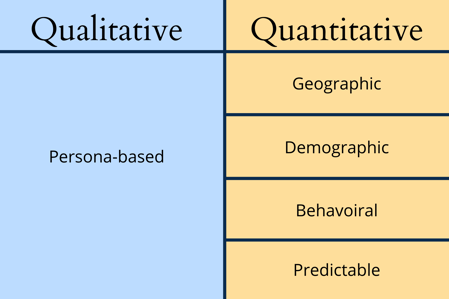
The graphic above shows the difference between the first and second type of customer segmentation. Qualitative and persona-based customer groups are used for the first round of customer interviews and understanding. Quantitative segments are reserved for the second round of refining customers.
3. How Are They Currently Solving the Problem?
Oftentimes, there is an existing solution for whatever problem you are trying to solve. Customers often need to choose between this existing choice and whatever the startup’s invention is. Sometimes this requires convincing and a whole lot of marketing. For example, Henry Ford had to convince his customers that his car was faster than a horse. That was not an easy thing to do!
Knowing your competition is an important part about knowing how customers currently solve a problem. Usually competition for a startup falls into 3 categories:
- Existing product
- Combination of 2-3 products
- Jury-rigging a solution
The type of existing competition will depend on the market and the product. It is also important to find the balance between problem size. Startups should not try to solve a huge problem first, but they also don’t want to try such a small problem that customers will not pay to fix.
4. What is Your Solution?
There are 2 examples of new startups. The disruptive and non disruptive ones. An example of a non-disruptive solution is OXO, the cooking utensil brand. OXO did not reinvent kitchen tools, they only made them more user friendly and sleek looking. Even though a OXO did not invent something new, they still did a lot of research before branding. They tried to understand the needs of the people so that they could design products that people want and will purchase for themselves.
An example of a disruptive invention is the Tesla car. They have disrupted the oil and gas industry by developing an affordable electric car. Tesla is addressing a market need: people desire to be environmentally friendly, while still having an efficient car. This differs from the traditional ‘car problem’ to solve-- the need to commute.
The key to defining a new solution is understanding the problem. Check out this article to learn more about finding solutions, and asking your customers about those solutions.
5. How Are You Unique?
A startup needs to be a combination of what it does well and what the customer wants. Check out the graphic below for a great visual.
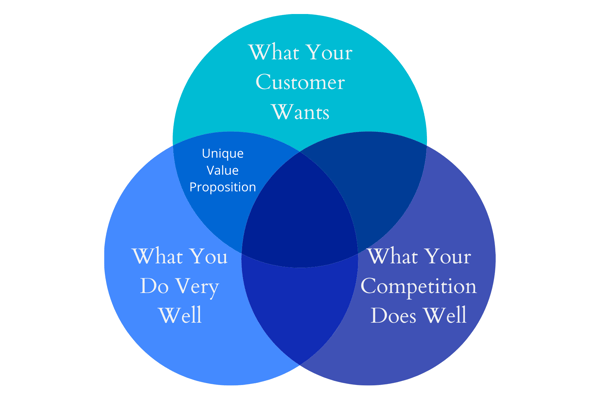
Notice how the Unique Value Proposition is completely separate from what the competition does. Startups need to differentiate themselves from the competition in order to stand out to both investors and customers.
A startup should be trying to fill a gap in the market. These questions should be considered:
What is the problem?
Who has the problem?
How are they currently solving it?
What is your solution?
How is the startup unique?
Answering these questions should help a startup develop their oven Problem - Solution Fit. This process can also be done by individuals, and not just startups.
Check out the follow-up article to this post, about Problem-Market Fit, here.
This content comes from a University Lab Partners webinar hosted in partnership with ScienceDocs , presented by Fehmida Kapadia. Check out the full video here .
Dr. Kapadia, PhD in Biochemistry, is a commercialization expert who has supported over 100 startups in the scientific space. As a university professor she has taught entrepreneurship classes, as a mentor she has served startups through the NSF iCorps program, and as a consultant, Dr. Kapadia has provided startups with such services as market research, customer segmentation, value proposition development, go-to market strategy and much more.
Be sure to subscribe to the ULP Youtube Channel to never miss another webinar, and connect with us on LinkedIn to stay in the loop!
FREE RESOURCE
The ultimate guide to wet lab incubators.
Download The Ultimate Guide to Wet Lab Incubators in Southern California, a handbook to assist life science start-ups through the entire decision-making process to find wet lab space.
Fill out the form below to download the Ultimate Guide
Related articles.
- The Pros and Cons of Joining a Life Science Startup
- Top Pitch Competitions for Life Science Startups
- Top Aesthetics Conferences in SoCal for 2024
- Strategic Negotiation Basics You Need to Know
- Know Before You Apply: SBIR / STTR Program
Apply for residency today
Do you have a great company in the bioscience or medtech industry? Do you need wet-lab and/or fabrication space to develop and test your product?

Related Articles

05/07/2024 | 2 MIN READ
Ulp selected to lead the barda accelerator network as the medical devices & diagnostics hub.

04/25/2024 | 3 MIN READ
Stem-based program in irvine fosters the next gen of medtech talent.

04/15/2024 | 1 MIN READ
Allergan and ulp announce the golden ticket pitch competition to accelerate aesthetics start-ups.
Problem-Solution Fit: What Is It + How To Get It [Customer Development]
Home » Problem-Solution Fit: What Is It + How To Get It [Customer Development] | 🕑
Gust de Backer
November 6, 2023.

The Customer Development Process contains 3 kinds of Fits:
- Problem-Solution Fit
- Product-Market Fit
- Business Model-Market Fit

The Problem-Solution Fit simply means that you have found a problem with your customer and that the solution you have realized for it actually solves the customer’s problem.
1. A Minimum Viable Product (MVP). 2. Satisfied early adopters ( earlyvangelists ) who use your MVP. 3. A validated problem that you solve for the earlyvangelists.
It varies tremendously by product, service or business, but according to Steve Blank, you need at least 3-5 satisfied paying customers for a Problem-Solution Fit.
How to get a Problem-Solution Fit?
Problem-Solution Fit in 8 steps:
It is important to have a good picture of your customer, not only the demographics but preferably also sociographic data.
Make assumptions of the problems you think your customer has and then go on to validate those assumptions. In the best case scenario, you can provide measurable insight into how big the customer’s problem is.
The more informed the customer is about their problem, the better. It may even be the case that your customer has realized an inefficient homegrown solution to try to solve the problem. Try as hard as you can to identify how well the customer is aware of the problem and when the customer will run into the problem.
Once you have found a validated problem you can realize your solution. Describe what the benefits and functionalities of your product or service are.
In a blue ocean , there may be few/no alternative solutions, but in a red ocean , you are bound to have competition trying to solve the same problem. Map out what the competition is and what they offer.
What are important go/no-go parts of your business, product or service? Map these out and, as much as possible, make sure your product is optimized for them.
What are important go/no-go parts of your business, product or service? Map these out and, as much as possible, Once you have found a quantifiable problem with the customer, it is fairly easy to measure the effectiveness of your solution. Make sure you have sufficient evidence that your product or service actually solves the customer’s problem.
If a you have found a bottleneck in one or more of the above 7 steps you can apply the Build-Measure-Learn cycle . In the end it remains a matter of making assumptions and validating them.
Get out of the building
The Problem-Solution Fit is an important step towards the Product-Market Fit, but often an underestimated one.
What do you think about the Problem-Solution Fit? Let me know in a comment below! P.S. would you like some help? Then send an email to [email protected] or leave a comment.
P.P.S. start with the Problem-Solution Fit Canvas .
I try to help business surpass their growth ceiling with my content.
Sounds interesting?
Let’s connect on LinkedIn!
Business Strategy | Customer Development Process | Problem-solution Fit | Product-market Fit
Gust’s Must-Reads 👇🏼

TAM SAM SOM
- Value Proposition
- Brainstorming
- Decision Making Unit
- North Star Metric
- Market Research
- Customer Development
- Growth Hacking
- Brand Identity
- Customer Journey
- Account-Based Marketing
![problem solution fit OGSM Model (2024): How-to & Examples [+ Template]](https://gustdebacker.com/wp-content/uploads/2023/11/OGSM-Model.png)
OGSM Model (2024): How-to & Examples [+ Template]
OGSM Model: a solution that helps with strategic planning and goal setting. You know where you want to go, but you don't have a clear picture of how you're going to get there. Ideas and goals are often not realized because there is no clear planning associated with...
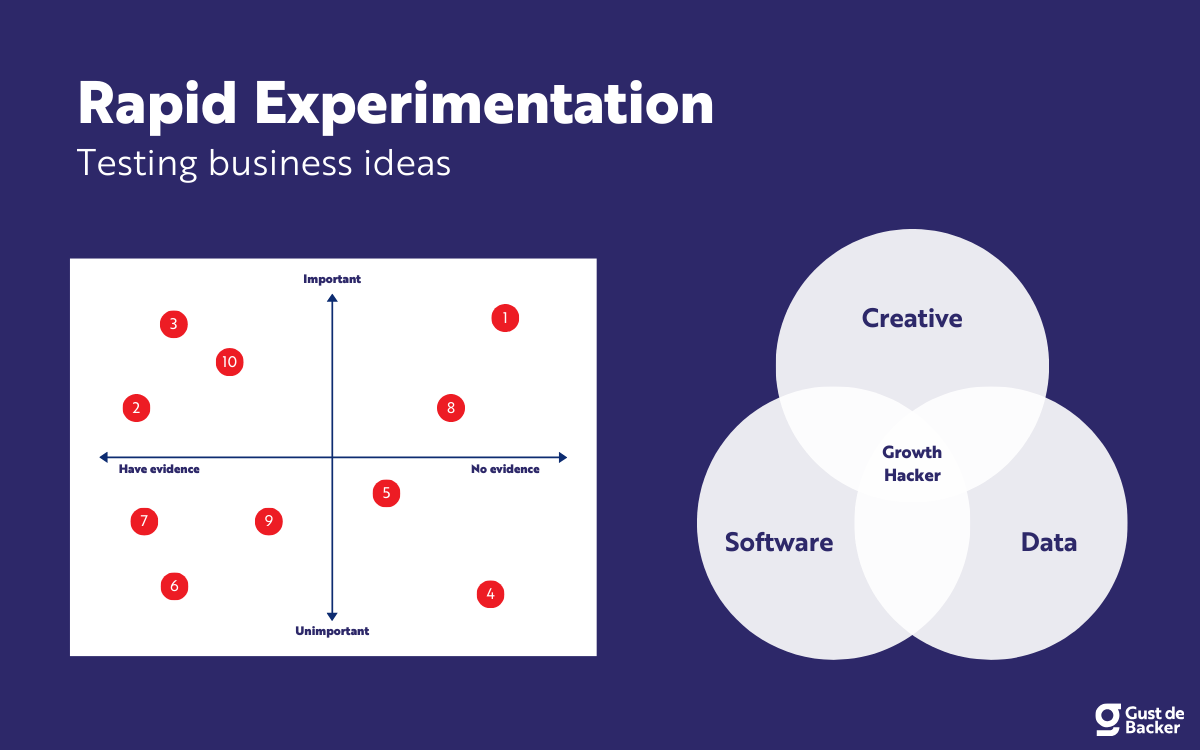
Rapid Experimentation: The Road To Innovation (Complete Guide)
You read it left and right, companies that owe much of their success to experimentation.... Of course, experimentation can be understood in a hugely broad way, so in this article I'm going to get you started with: Understanding why experimentation is important...
![problem solution fit Cognitive Biases (2024): Complete List of 151 Biases [Psychology]](https://gustdebacker.com/wp-content/uploads/2023/11/151-Cognitive-Biases.png)
Cognitive Biases (2024): Complete List of 151 Biases [Psychology]
Cognitive biases, there are so many of them... Decisions we make based on emotion, cognitive biases are irrational 'errors' that are programmed into people's brains and affect the decision-making process. Plenty of different articles have been written and an entire...
Submit a Comment Cancel reply
Your email address will not be published. Required fields are marked *
Save my name, email, and website in this browser for the next time I comment.
Submit Comment
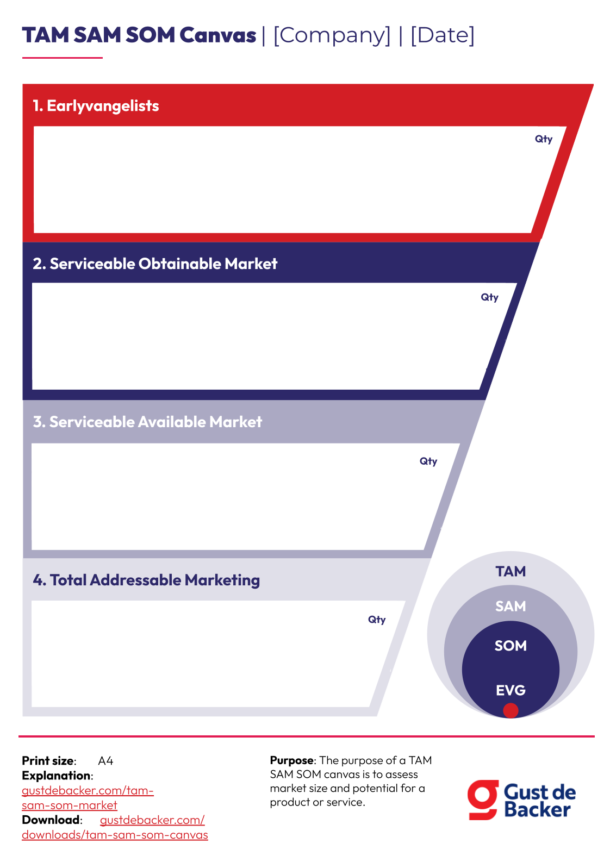
You have Successfully Subscribed!

8 Best Examples of how to use Problem Solution fit and 10 Proven Books
Mastering problem-solution fit in product development: Learn how to align your solution with customer needs for startup success. Expert tips and examples

Mike Parsons
Problem-solution fit is a concept often discussed in the context of startups and innovation. It refers to the alignment between a specific problem faced by a target customer segment and the solution or product that a business offers to address that problem. Achieving problem-solution fit is crucial in the early stages of product development and validation.
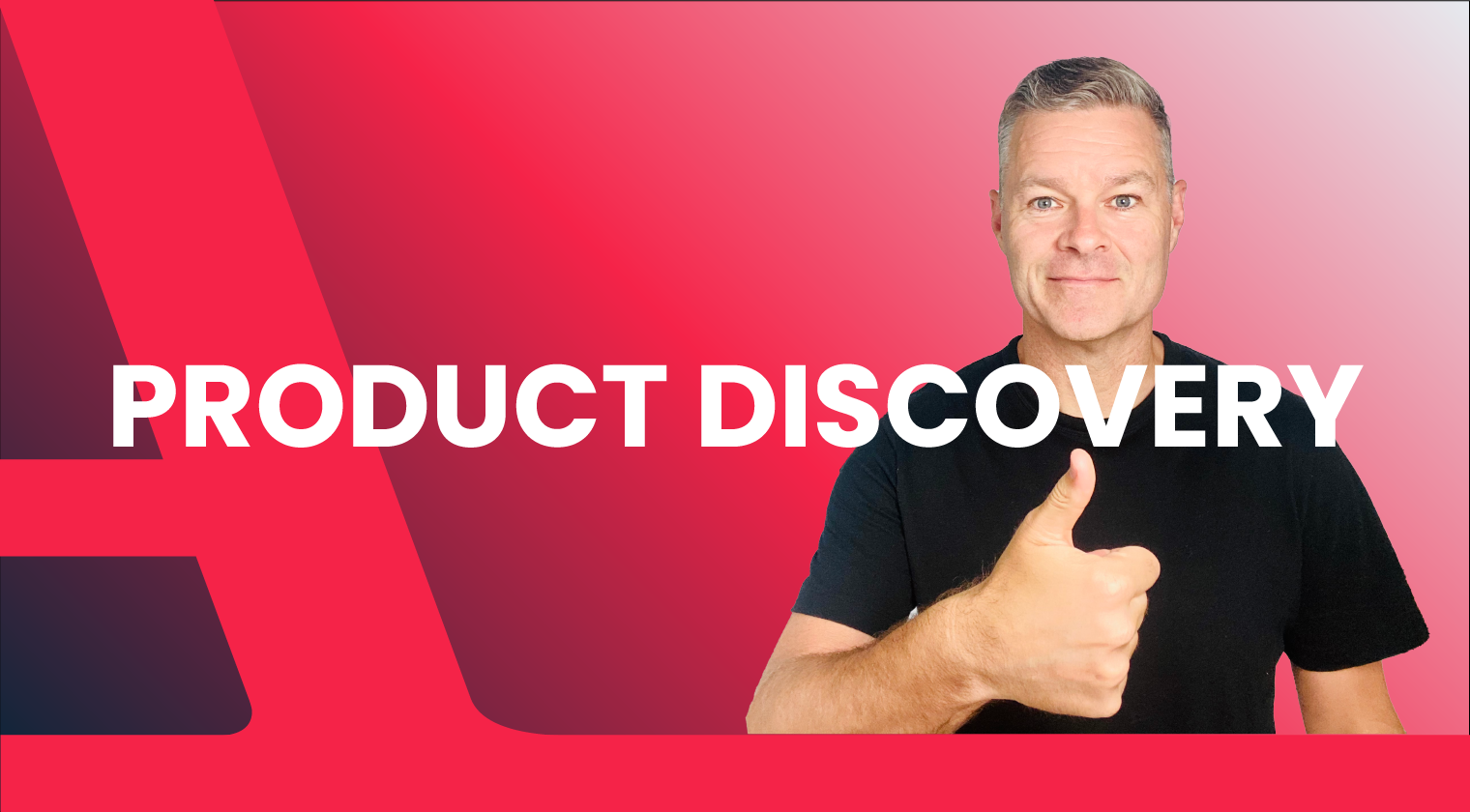
Here's how to use it and an example to illustrate:
How to Use Problem-Solution Fit:
- Identify a Target Customer Segment: Define a specific group of potential customers with a common problem or pain point. The more narrowly you can explain this segment, the better you can tailor your solution to their needs.
- Understand the Problem: Dive deep into understanding the problem your target customers are experiencing. Conduct interviews, surveys, and research to gather insights. It's essential to grasp the situation from the customer's perspective fully.
- Brainstorm Solutions: Once you clearly understand the problem, brainstorm potential solutions. These could be products, services, or features directly addressing the identified issue.
- Create a Minimum Viable Product (MVP): Develop a minimal version of your solution, known as an MVP, that allows you to test your hypothesis. The MVP should be simple but effective enough to provide value to your target customers.
- Test with Customers: Engage your target customer segment and offer them the MVP to gather feedback. Please consider how well the solution solves their problem and whether it meets their needs and expectations. Read more about Rapid Prototypin g.
- Iterate and Refine: Based on your feedback, make necessary adjustments and improvements to your solution. Iterate through this process multiple times if needed until you achieve a strong fit between the problem and your solution.
- Measure Success: Define critical metrics or indicators of success, such as user adoption, customer satisfaction, or revenue growth. Continuously monitor these metrics to assess whether you've achieved problem-solution fit.
Example of Problem-Solution Fit:
Let's consider an example involving a hypothetical startup in the food delivery industry:
Problem: Many busy professionals struggle to find healthy and convenient meal options for lunch at work. They often resort to fast food or unhealthy choices due to limited time and opportunities.
Solution: The startup develops a mobile app that offers a curated selection of healthy and convenient lunch options from local restaurants. Users can pre-order their meals, customize them to their dietary preferences, and deliver them to their workplace within a specific time window.
Steps Taken:
- Identify Target Customer Segment: Busy professionals working in urban areas.
- Understand the Problem: Conduct surveys and interviews to discover that these professionals value health but often compromise their lunch choices due to convenience.
- Brainstorm Solutions: Develop the idea of a lunch delivery app offering healthy options.
- Create an MVP: Build a basic app version with a limited menu and delivery in a single city.
- Test with Customers: Offer the MVP to target users for feedback. Monitor their experience, satisfaction, and usage.
- Iterate and Refine: Incorporate user feedback to expand the menu, improve the ordering process, and optimize delivery logistics.
- Measure Success: Track user adoption, customer reviews, and revenue growth. As the app gains popularity and consistently receives positive feedback, it shows a problem-solution fit.
A few examples of problem-solution fit in various contexts:
- Problem: In many urban areas, finding a taxi during peak hours could be a frustrating and time-consuming experience.
- Solution: Uber introduced a smartphone app that connects riders with available drivers nearby, making it convenient and efficient to get a ride when needed.
- Problem: Travelers often face limited lodging options, especially during peak tourist seasons, and hotels can be expensive.
- Solution: Airbnb created a platform that allows people to rent out their homes or spare rooms to travelers, offering a more comprehensive range of affordable accommodations.
- Problem: Traditional cable TV subscriptions were expensive and limited content choices.
- Solution: Netflix introduced a streaming service that provides on-demand access to a vast library of movies and TV shows, offering a more affordable and flexible entertainment solution.
- Problem: Learning a new language could be expensive and challenging for many people.
- Solution: Duolingo developed a free mobile app that offers gamified language courses, making language learning accessible, engaging, and cost-effective.
- Problem: Traditional gasoline-powered vehicles contribute to pollution and rely on finite fossil fuels.
- Solution: Tesla produces electric cars that are environmentally friendly, have long-range capabilities, and offer an alternative to traditional gas-powered vehicles.
- Problem: Many workplaces struggle with inefficient and scattered communication tools, leading to lost productivity.
- Solution: Slack introduced a collaboration platform that centralizes communication, file sharing, and project management, streamlining workplace communication.
- Problem: Quality education was often inaccessible to people in remote areas or those with limited financial resources.
- Solution: Coursera offers online courses from top universities and institutions, providing affordable and convenient access to high-quality education.
- Problem: Keeping track of one's fitness goals and progress could be challenging without proper tools.
- Solution: Fitbit developed wearable fitness trackers that monitor physical activity, sleep, and more, helping users stay motivated and accountable in their fitness journeys.
These examples illustrate how successful companies and innovations have identified specific problems in various domains and developed solutions that effectively address those problems, resulting in a solid problem-solving fit and meeting the needs of their target audiences.
Suggested Reading
Exploring the concept of problem-solution fit and related topics can be highly beneficial for entrepreneurs, product managers, innovators, and anyone interested in developing and refining solutions to real-world problems. Here are some suggested readings to delve deeper into this subject:
- This book is a cornerstone in the world of startups and innovation. It covers building a successful startup, including the importance of problem-solution fit, minimum viable products (MVPs), and the build-measure-learn feedback loop.
- Peter Thiel, co-founder of PayPal and an influential entrepreneur and investor, shares his insights on innovation and building companies that create unique solutions to significant problems. He emphasizes the importance of going from "zero to one" by creating something entirely new.
- This book introduces the concept of a design sprint, a structured process for solving critical problems and testing ideas quickly. It's a practical guide to problem-solving and validation.
- Building on the Business Model Canvas framework, this book focuses on designing value propositions that address customers' needs and problems effectively.
- Understanding how to create products that solve users' problems while forming habits is a crucial aspect of problem-solution fit. This book delves into the psychology of habit formation in product design.
- Christensen's seminal work explores why successful companies often fail when disruptive innovations come into play. It offers insights into understanding market needs and adapting solutions accordingly.
- This book provides insights into the psychology of decision-making, which is crucial for understanding how customers perceive and react to problem-solving solutions.
- Learn how to measure and analyze the key metrics indicating whether your solution effectively solves the identified problem. This book offers a data-driven approach to problem-solving fit.
- This practical guide focuses on testing and experimenting with business ideas and solutions to ensure they resonate with the target market before investing heavily in development.
Remember that problem-solution fit is a dynamic concept that requires ongoing learning and adaptation . These readings can serve as a foundation for understanding its principles and practices, but staying updated with industry trends and continually seeking feedback from customers and users is equally important.
Achieving problem-solution fit ensures that your product or service genuinely addresses a pressing problem for your target audience, increasing the likelihood of long-term success in the market.
Sign up for more like this.

I Want Product-Market Fit

4 types of problem-solution fit
A visual, demystifying guide.

Once your startup identified the right problem to solve (and ignored the wrong problems ), it's time to find the right solution.
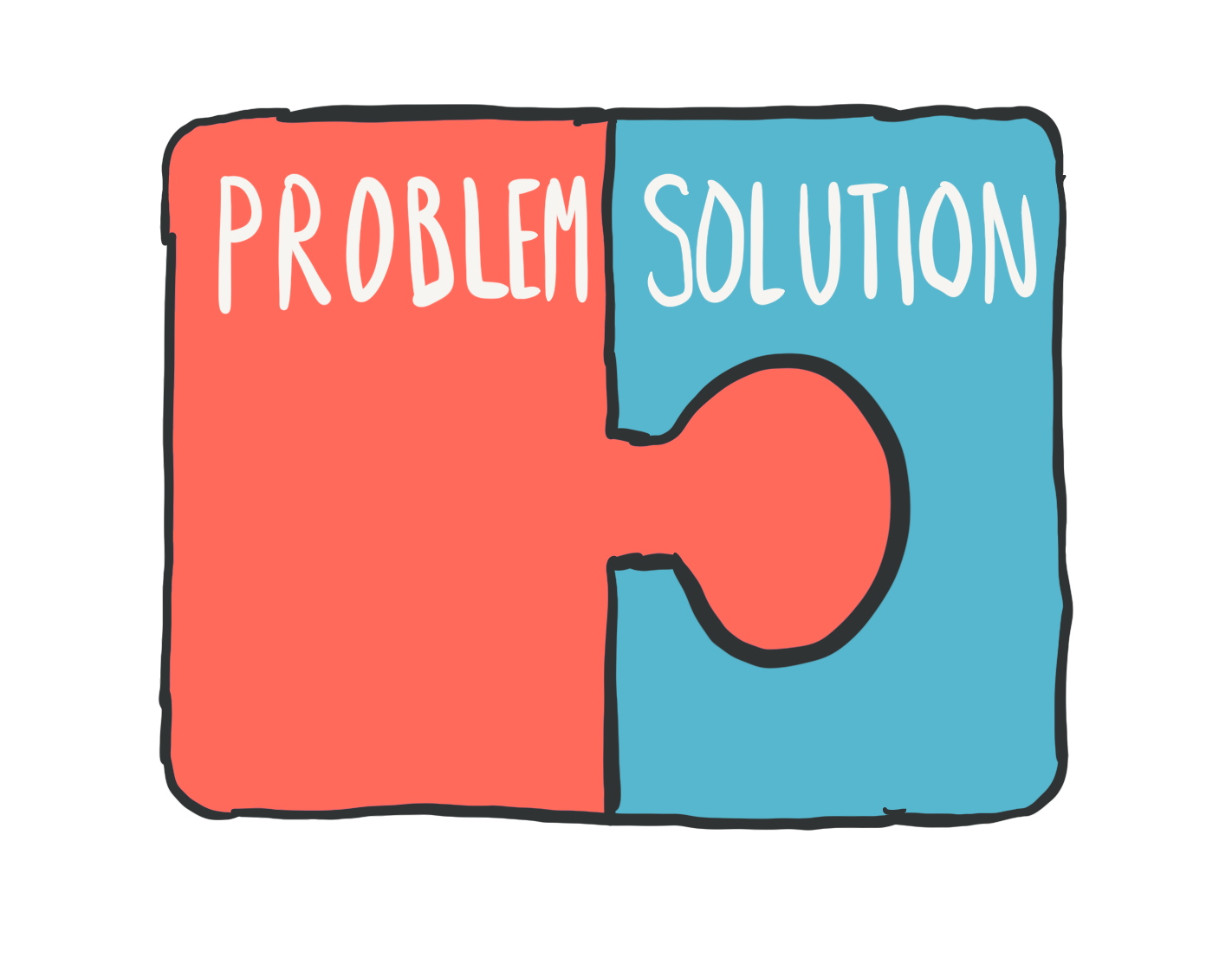
If a solution solves a problem, value is generated. As a startup, that’s what you want. In the end, all successful innovations are appropriate combinations of problems and solutions.
If they are ‘right’, the problem and solution fit neatly. Hence the name, problem-solution fit.
Within the startup journey, problem-solution fit is an important milestone .
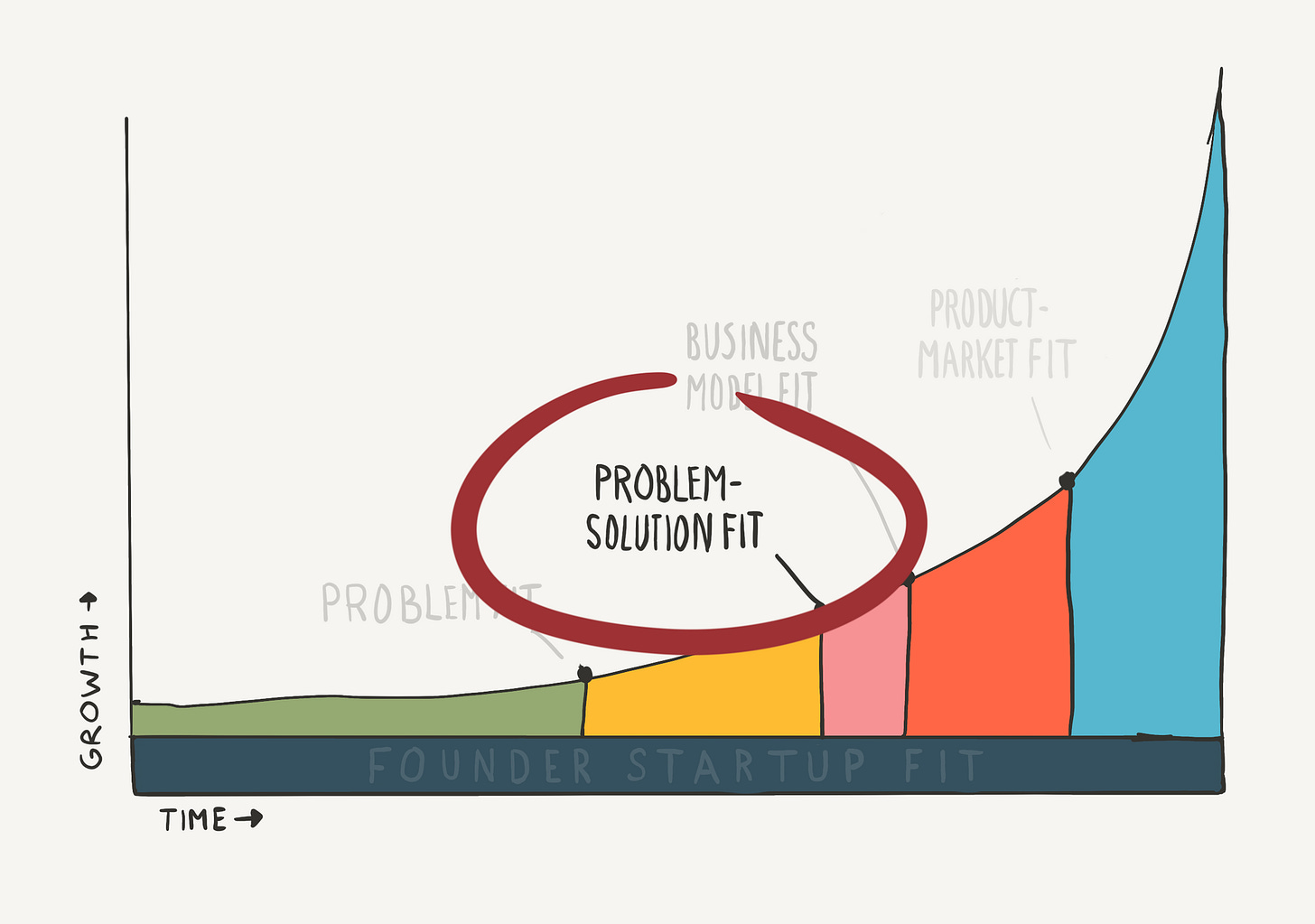
A lot of articles on problem-solution fit lack nuance, I feel they oversimplify. There are different gradations of problem-solution fit. Allow me to demonstrate.
Example anecdote: I hate flat bicycle tires. When I was 20, I once had 3 flat tires in 1 week. I was so frustrated, I started to think of solutions.

1. Reasoned problem-solution fit

I came up with the idea of making a solid rubber tire that would never get flat. In my head, this solved the problem. This is what I call reasoned problem-solution fit . It lives on the drawing board, without evidence.
I didn't have any arguments, other than logically the features of the rubber would overcome the problem.
I wondered whether this solution existed. I found this brightly coloured solution on Google.

The product exists already, a startup-dream killed. But my problem lived on.
2. Perceived problem-solution fit
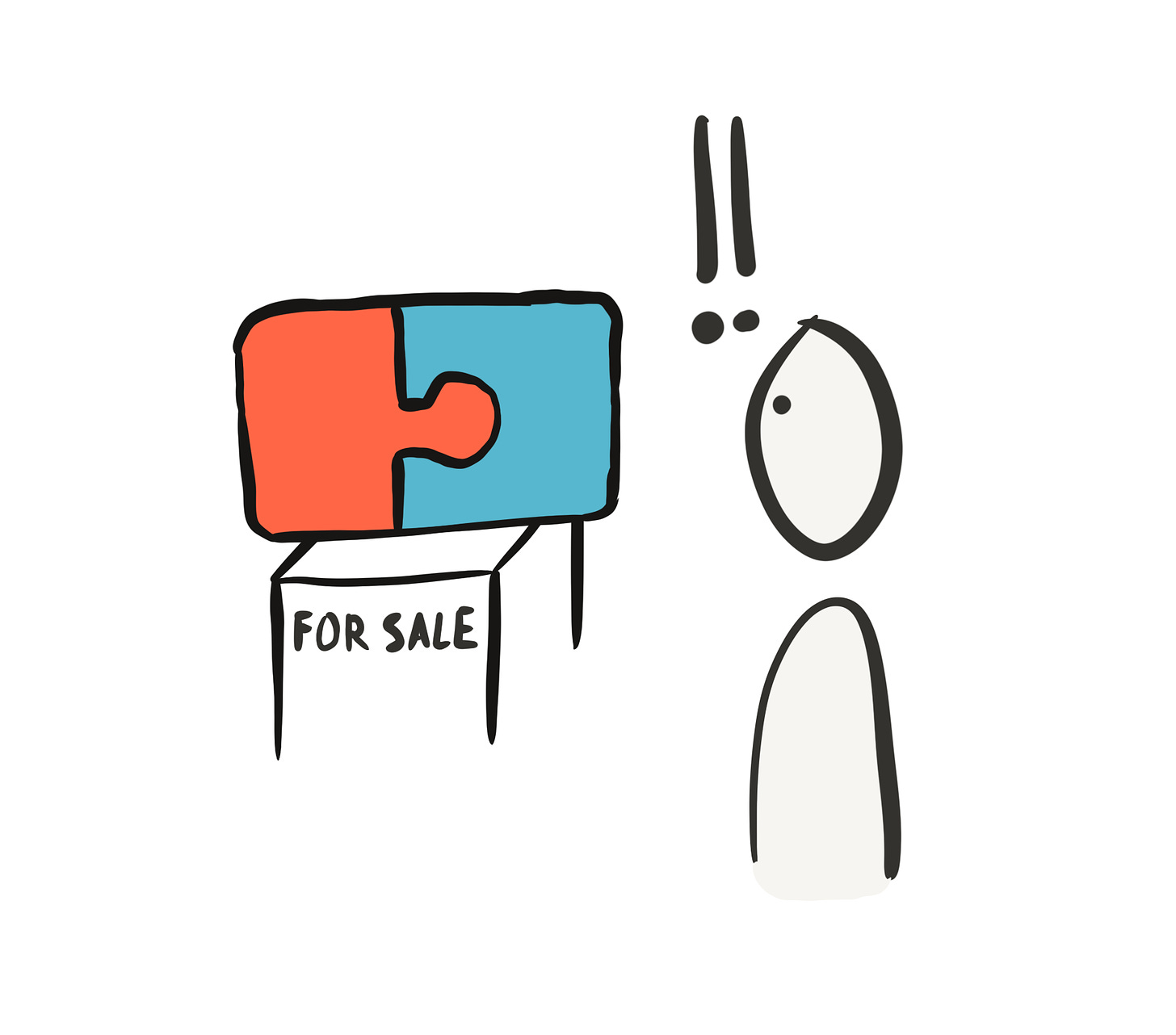
As a customer, I believed it would technically solve that problem. I was on the verge of buying, yet I didn't.
I don't remember why. Maybe I was broke as a student, as the tires were over €50.
As a founder, you should show your solution (prototype, brochure or landing page) to your customer. See if they understand how it solves their problem. If it resonates, I call this perceived problem-solution fit .
For me, (pre-)orders are a sign of perceived problem-solution fit. With a landing page, you can easily gauge perceived problem-solution fit. This comes down to the desirability of your solution .
Below, the latest version of the tire of the same brand.
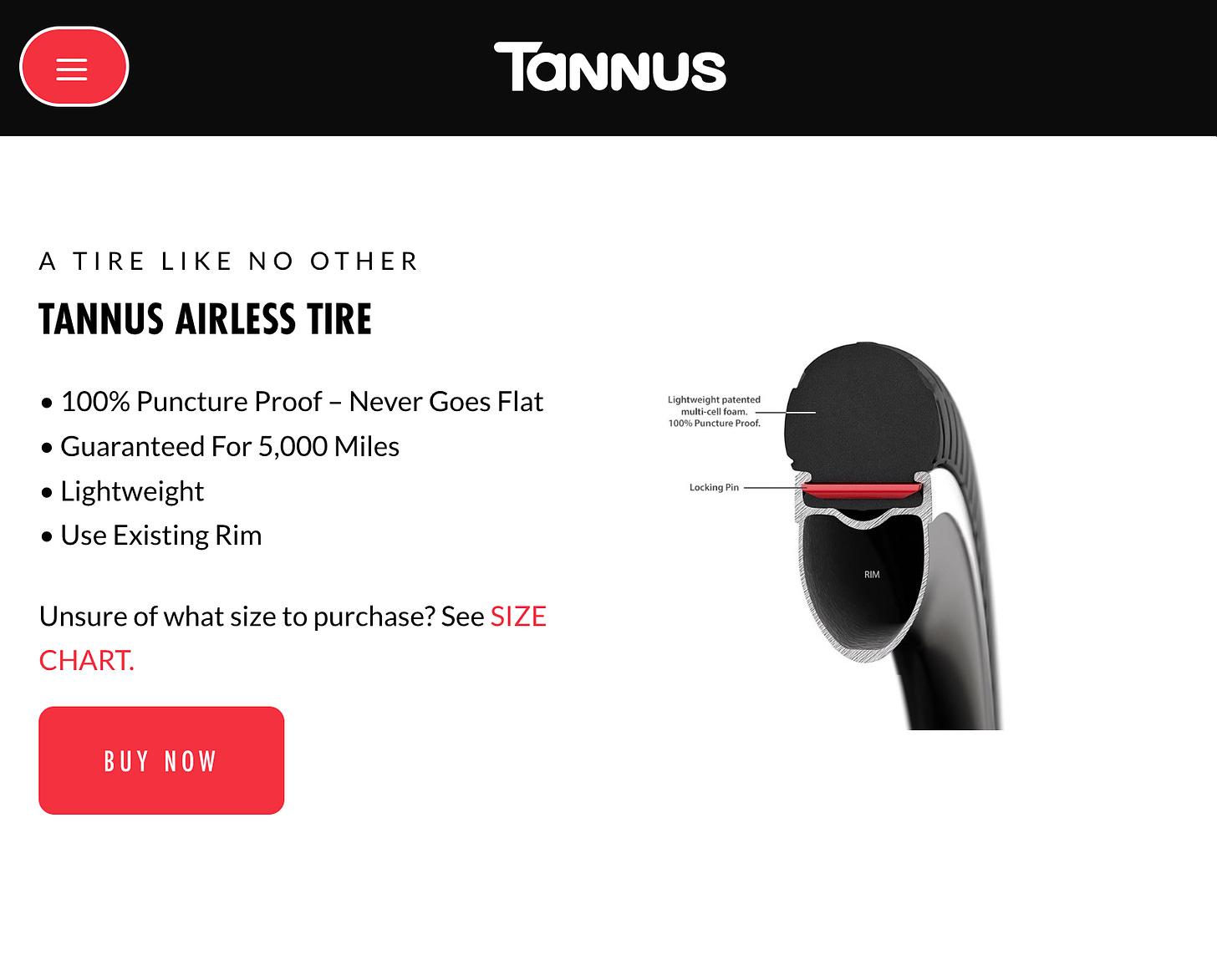
3. Demonstrated problem-solution fit

Above I showed you some actual purchasable options. But, I didn't show proof that it actually solved the problem.
Some solutions have demonstrable problem-solution fit . In our example of the flat tire, we would like to see whether it gets flat when confronted with pointy things.
This is where most demos come in, teleshopping is great at this.
"Hi, Billy mays here with this new fantastic product"

What we get is the following: A demonstration of problem-solution fit in a controlled environment ( video for tires ). In this way, you can demonstrate problem-solution fit. This is linked to proving the feasiblity of your solution.
4. Observed in the wild problem-solution fit

Still, these tires are not in my life. To be honest, as of today, I haven't seen many solid tires on consumer bicycles. I guess it was not such a solid product after all (sorry but not sorry).
I've only seen them on some of the bicycle-sharing bikes (Mobike), and trust me (and my butt), they are very bumpy.

This brings me to the highest form of proof of problem-solution fit: solutions implemented in the lives of customers. I talk about solutions that are actually being used in real life, not just demoed in controlled environments.
With this, we get observed problem-solution fit . You can observe the solution fitting to the problems in the lives of the customers without your intervention.
For these Mobikes, I would consider observed problem-solution fit . Although according to me, there are better solutions, such as air tires.
How convincing is each type?
As with everything, I see it as a spectrum. Some of these types of ps-fit are more convincing than others. For me, reasoned is the least convincing, observed the most. Perceived and demonstrated are very close to each other in the middle; their order could also be reversed.
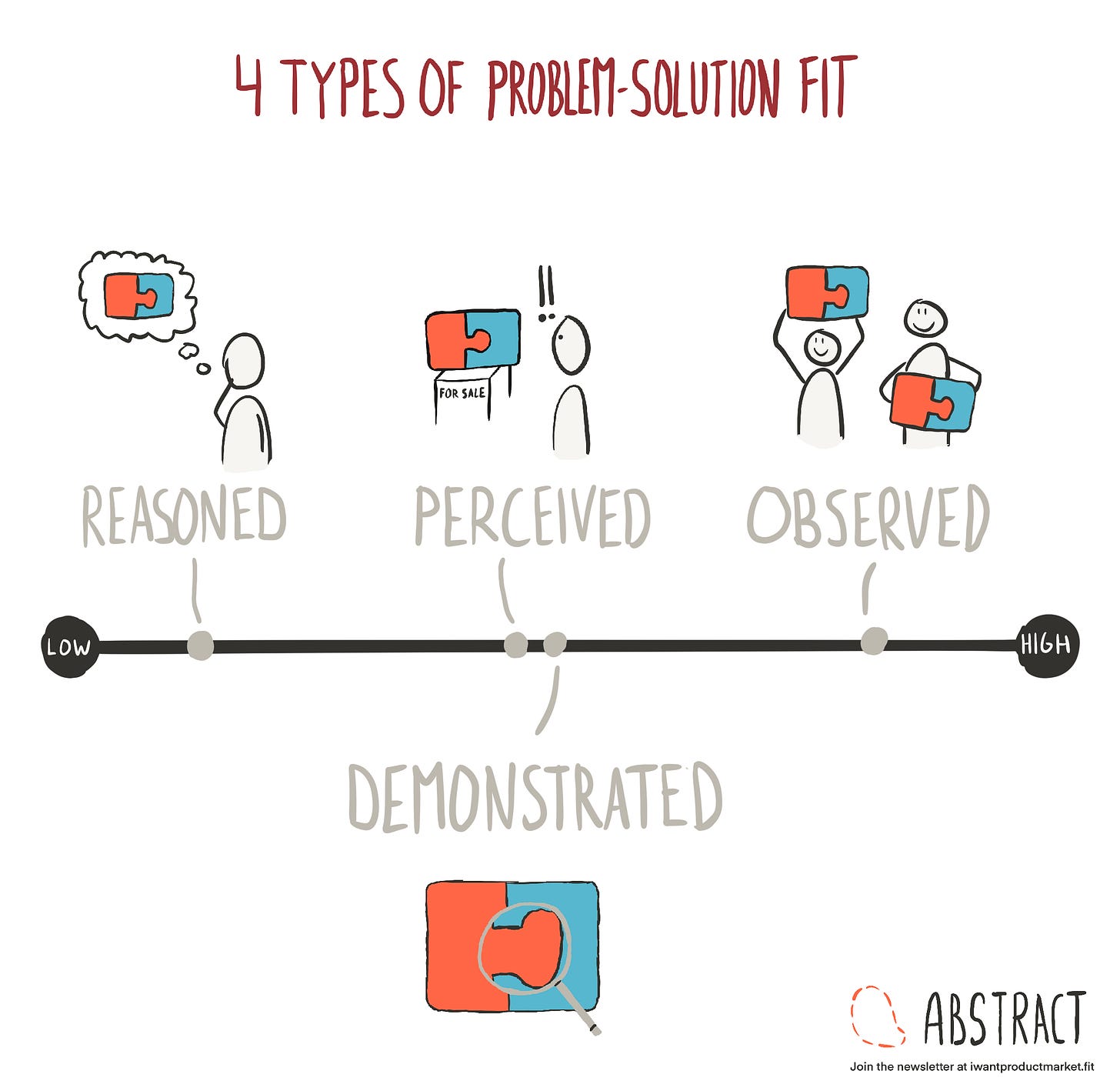
Buckets, not checklists.
This is not a checklist. Each type is a way to look at problem-solution fit, relating to the maturity of your startup.
See these 4 types as buckets that fill up with evidence over time. Your reasoned problem-solution fit bucket will fill up pretty fast from the start.
When you start prototyping MVPs and landing pages, your perceived and demonstrated problem-solution fit will start to slowly fill up.
When you launch (or do pilots), you will start filling the observed problem solution-fit bucket.
Most likely, your buckets start filling up from the left, slowly progressing to buckets on the right. Ask yourself, how many arguments, pieces of evidence or proof do I have for each of these types of problem-solution fit?
How was this article?
Great - good - meh.
How was this one for you?
Ready for more?
Problem-Solution Fit
/ˈprɑː.bləm səˈluː.ʃən fɪt/
A problem-solution-fit occurs if a startup has proved both: 1) that there is a 'problem worth solving' for one or more clearly defined customer groups, and 2) that there is evidence that these customer groups would consider the value proposition of the solution the firm proposes.
Having reached problem-solution fit means that you’ve understood your customers’ needs/ jobs-to-be-done and their desired outcomes. It also means that you’ve created a solution that addressed these needs in a unique way, as customer feedback suggests so (validation of desirability). However, contrary to widely-held opinion it does not mean that you already have evidence that they would really buy it. This next inflection point in lean validation is called product-market fit .
Related Terms
- Business Model Fit
- Product-Market Fit
- Strategy Fit
- Intrapreneurship
- Lean Innovation
Related Topics
- Lean Startup
What are you looking for?
Problem/Solution Fit vs Product/Market Fit
Startup and Entrepreneurship
Aug 11, 2020

As a startup, it is essential to ensure that your product or service solves a problem and meets a market need. But what exactly do these terms mean, and how do they differ?
Problem/solution fit and product/market fit are crucial concepts that every startup should understand to increase their chances of success.
In this blog, we’ll delve into the details of problem/solution fit and product/market fit, explaining the differences between the two and sharing use cases and examples to help you understand how they work.
By the end of this post, you’ll have a clear understanding of both concepts and how they can help you build a successful product or service.
What is a Problem/Solution Fit?
Problem/solution fit refers to the relationship between a problem that needs solving and the solution that addresses that problem. In other words, it’s about finding a solution to a problem that your potential customers have.
For example, let’s say you are launching a new software tool that helps small business owners manage their finances. This tool addresses the problem that small business owners often need help keeping track of their finances, leading to lost revenue and inefficiency. The solution your tool offers allows small business owners to easily track their finances, saving them time and money.
Why is Problem/Solution Fit Important?
Problem/solution fit is essential because it helps ensure that your product or service addresses a real problem that your potential customers have. You need to have a good problem/solution fit to avoid developing a product or service with a clear purpose or value proposition. This can lead to poor sales and customer retention, resulting in a failed product or service.
On the other hand, having a strong problem/solution fit can lead to better customer acquisition and retention and a higher customer lifetime value. This is because customers are more likely to continue using and recommending your product or service if it solves a problem they have in a meaningful way.
How do you determine if you have a Problem/Solution Fit?
There are several ways to determine if you have a good problem/solution fit:
- Conduct customer research: After talking to potential customers and gathering feedback, you can learn more about their problems and whether your solution addresses them effectively.
- Analyze customer behavior: If you analyze how customers use your product or service, you can understand more about the problems they face and how your solution is helping them solve those problems.
- Test your solution: You can gather valuable feedback about your product by testing your solution with a small group of customers, and determine if it’s solving the problem effectively.
- Track customer metrics: By tracking key metrics such as customer retention and lifetime value, you can get a sense of whether your solution is meeting your customers’ needs and solving their problems effectively.
Problem/Solution Fit Examples
Some examples of companies that have achieved problem/solution fit include:
1. Airbnb : Airbnb identified a problem travelers face: finding affordable and comfortable accommodation. They developed a solution – an online platform that connects travelers with hosts offering short-term rentals. Airbnb validated its solution by conducting market research and testing the platform with a small group of users before launching it globally.
2. Dropbox : Dropbox identified a problem faced by individuals and businesses – the need to access and share files across different devices. They developed a solution – a cloud-based file storage and sharing platform. Dropbox validated its solution by testing it with a small group of users before launching it to the public.
3. Tesla : Tesla identified a problem consumers face – the environmental impact of gasoline-powered vehicles. They developed a solution – electric vehicles that are more environmentally friendly and efficient. Tesla validated their solution by conducting market research and testing their vehicles with a small group of users before launching them to the public.
4. Uber : Uber identified a problem urban residents face – the lack of reliable and affordable transportation options. They developed a solution – a ride-hailing platform that connects drivers with riders. Uber validated their solution by conducting market research and testing their platform with a small group of users before launching it globally.
5. Spotify : Spotify identified a problem music fans face – the difficulty of finding and listening to new music. They developed a solution – a streaming service that provides access to a wide range of music. Spotify validated its solution by conducting market research and testing its platform with a small group of users before launching it to the public.
Helping startups since 2011 to acheive Product-Market Fit.
What is a product-market fit.
Product/market fit, on the other hand, refers to the extent to which a product is successful in a specific market. It is not just about solving a problem but also about delivering value to customers that meets their expectations and the market’s needs.
Here are some key characteristics of product/market fit:
- The product is meeting the needs and expectations of the target market
- The product is competitive in the market
- The product is generating revenue and profitability
Why is a Product-Market Fit important?
Product/market fit is crucial for the success of any product. According to research from CB Insights , 35% of startups fail because there is no market need for their product, and this is only second to a failure to raise new capital (38%).
With a product/market fit, a product may gain traction and be profitable in the long term. On the other hand, a product with a strong product/market fit will be well-received by customers and will be able to grow and scale successfully.
Achieving a product/market fit is not a one-time event; it is a continuous process that requires ongoing market research and product development. It is essential to constantly assess and adjust your product to ensure that it meets the market’s needs and delivers value to customers.
How do you determine if you have a Product-Market Fit?
There are a few key indicators that can help you determine if you have achieved product/market fit:
- User feedback : One of the most reliable ways to determine if you have product/market fit is by seeking feedback from your target audience. You can do this through surveys, focus groups, and user testing. If your target audience consistently provides positive feedback about your product, it is a good sign that you have a product/market fit.
- User adoption : If your target audience is actively using and engaging with your product, it is a good sign that you have a product/market fit. Look for high retention rates, increased usage, and referrals.
- Market demand : A high demand for your product is a good sign that you have a product/market fit. Look for indicators such as high sales numbers, a long waiting list, or a high number of inbound leads.
- Competitor activity : If your competitors are reacting to your product or trying to copy it, it is a good sign that you have product/market fit. This suggests that your product significantly impacts the market and is worth paying attention to.
- Financial performance : If your product is generating revenue and profitability, it is a good sign that you have product/market fit. This suggests that your product is meeting the market’s needs and can sustain itself financially.
It is worth noting that achieving product/market fit may mean something other than that your product is perfect or that it will always be successful. It means that you have found a fit between your product and the market, and it is now up to you to continue refining and improving your product to maintain that fit.
Examples of product-market fit
Some examples of companies that have achieved product/market fit include the following:
- Apple : Apple has achieved product/market fit multiple times with its various products, including the iPod, iPhone, and iPad. Each of these products was developed to meet its target market’s specific needs and preferences and has been well-received.
- Google : Google used its search engine and has maintained it by consistently providing relevant and accurate search results and expanding its services to include email, maps, and more. The search engine is the major contributor in making Google’s product/market fit.
- Slack : Slack has achieved product/market fit with its team communication platform and has maintained it by consistently improving the user experience and adding new features and integrations.
- Airbnb : Airbnb has achieved product/market fit with its short-term rental platform and has continued to maintain it by consistently improving the user experience and expanding to new markets.
Lets find your product/market fit quicker than your competitor.
Key differences: problem/solution fit vs product market fit.
Here are the key differences between problem/solution fit and product/market fit:
Wrapping Up
In conclusion, startups need to understand the difference between problem/solution fit and product/market fit. While both are crucial for the success of a startup, they focus on different aspects of the business.
Determining problem/solution fit is crucial during product development and early customer testing stages. In contrast, product/market fit should be evaluated over a longer period after the product has been launched and is being actively sold. Both problem/solution fit and product/market fit can be evaluated through customer feedback, usage data, and market research.
Startups should continuously strive to achieve both problem/solution fit and product/market fit to increase their chances of success. By focusing on these two areas, startups can develop solutions that effectively solve problems and bring value to their target market.
Let's discuss your project today
Problem-Solution Fit
The term problem-solution fit refers to the match between a proposed solution and the problem or an unmet need it is trying to address. Problem-solution fit precedes product-market fit.
The first indication of whether an idea will be successful is typically based on finding a problem-solution fit. To decide whether there is a fit there must be clear evidence that a problem exists and a high probability that the solution will solve it better than existing ones.
This is usually done by identifying and interviewing a potential target user or customer with a problem or need. Once the problem has been validated, the solution can be defined or adapted.
The solution can then be validated through validation interviews or experiments.
An often-used tool for capturing problem-solution fit is the value proposition canvas.
Related concepts
Corporate entrepreneur.
A corporate entrepreneur is a person that works on developing new ideas and innovation projects inside an existing organisation. They may be working with the explicit backing of management but also happen to work under the radar. A similar term, “intrapreneur”, is used interchangeably with corporate…
Idea Campaign
An Idea Campaign is a time-bound, topic-focused initiative to ideate, screen, develop and validate ideas. It is used to address business or technical problems that require input from a broad group of people. The idea campaign is a simple method to quickly solve small and big problems…
Product-Market Fit
The term “product-market fit” refers to the match between the actual solution (product, service, business model, etc.) and the market it addresses. Essentially, it is about finding out if a solution satisfies strong market demand…
Keep in touch
CVR: 29515506 Denmark Blegdamsvej 6 2200 København N +45 70 70 12 42 +49 17 73 86 08 27
Connect with us
Write to us, privacy overview.
- Skip to primary navigation
- Skip to content

- Try Tactyqal

You need problem solution fit before product market fit
Introduction.
Starting a startup is no easy task. There are so many things to think about – from developing your product to finding the right customers. But one of the most important aspects of a successful startup is making sure your solutions fit the problem you’re trying to solve – problem solution fit.
In this post, we’ll discuss what problem-solution fit is, why many startups fail before finding problem solution fit , and how startup entrepreneurs can make sure they have it. We’ll also share some tips on how to find the right problems to solve. So if you’re ready to start building your business, read on! If you’re out of time and don’t have the time to go through the post, just take the problem-solution fit quiz to find out if your startup has achieved it. And once you reach problem-solution fit, check out our ultimate guide to getting product-market fit .
What is Problem-Solution fit and Product-Market fit?
Problem-solution fit.
When someone comes up with a new business idea, they usually start by looking for a big problem that needs solving. They think of something that could help fix that problem. That’s called finding a “problem-solution fit” – their solution fits well with the problem.
Once they have a good solution for a real problem, they can try to turn it into a real product. Now they have to find lots of people who want to use it – that’s their market. If enough people want the product, that’s called “product-market fit”. So first you find a problem and figure out how to solve it. Then you make sure enough people want to use your solution. That way, you have a good business idea that can turn into a company.
The biggest reason why startups fail is that they build something no one likes.
After surveying failed startups, CB Insights found that the primary reason they collapsed was that customers showed no interest in their products.
To spare yourself from this agony, achieve problem-solution fit before you deplete your funds – which is the second most typical explanation for a startup’s downfall.
Most startups focus on new cool technology and build products or solutions that are in search of a problem. So, the first thing to do if you’re a startup founder or aspiring entrepreneur is to first find a genuine problem before you even start building the product or writing code.
A problem-solution fit is when a startup has identified a problem that its product or service can solve. It’s a startup’s initial validation that its solution actually solves the problem it set out to solve for a particular target market. It’s important because it gives startups a way to measure whether they are making progress and helps them prioritize what to work on next.
A problem-solution fit is essential for a startup to be successful. Without it, a startup will not be able to achieve product-market fit & acquire customers or scale.
There are three main ways to achieve a problem-solution fit: 1) Identifying a new problem 2) Identifying a new solution to an existing problem 3) Identifying a new market for an existing solution. Let’s take a closer look at each of these:
1) Identifying a new problem: This involves finding a problem that is not yet being addressed by existing solutions. This can be done by observing people and their environment and looking for pain points that are not yet being addressed.
2) Identifying a new solution to an existing problem: This involves finding a new way to solve an existing problem. This can be done by brainstorming creative solutions to existing problems, or by observing how people are currently solving the problem.
3) Identifying a new market for an existing solution : A key aspect of any successful business is identifying a new market for an existing solution. This can be done through a process of market analysis and identifying unmet needs. Once a market opportunity has been identified, it is important to assess whether the existing solution is a good fit for the problem. This involves considering factors such as the size of the market, the nature of the problem, and the available resources. If the existing solution is not a good fit for the problem, it may be necessary to develop a new solution or adapt to the existing one. Ultimately, identifying a new market for an existing solution is essential for any business that wants to succeed in today’s competitive landscape.
Example of Problem-Solution Fit
Slack entered the workplace communication space focusing intensely on fixing one major pain point: unorganized, hard-to-find information spread across multiple tools. After struggling to gain traction with a game product, the founders deeply empathized with users to understand their challenges. They narrowed in on solving information fragmentation leading to wasted time.
By organizing scattered data into instantly searchable channels, Slack perfectly fit users’ jobs to be done. This ultimately propelled viral adoption and market leadership.
The Pitfalls of Neglecting Problem Solution Fit
What happens when you don’t achieve a solid problem-solution fit? Some all-too-common startup horror stories:
The product confuses users: Without understanding users’ struggles, your solution seems convoluted and makes little sense to them.
The product irritates users: It tries to “solve” a problem users don’t actually recognize or care about.
The product bores users: It only fixes a superficial issue rather than the deeper problem that truly concerns users.
The product disappoints users: It doesn’t fully satisfy the underlying needs users have.
These pitfalls result in enraged users that quickly abandon your product to find something better.
Neglecting problem solution fit cripples your product reputation and word-of-mouth growth. Today’s app stores and review sites make user dissatisfaction public knowledge.
In contrast, if your product delights users by solving an acute pain point, they’ll eagerly spread the word about your solution. Obsessing over problem solution fit lays the foundation for viral organic growth.
What is product-market fit or solution-market fit?
According to Benchmark Capital co-founder Andy Rachleff, Sequoia Capital founder Don Valentine coined the term product-market fit. Venture capitalist Marc Andreessen of Andreessen Horowitz would later popularize the term in the mid-2000s.
Product-market fit or PMF refers to the moment when a startup finally finds the right market for its product. This is an important milestone for any startup, as it can mean the difference between success and failure. However, achieving PMF is often easier said than done.
In order to find a market for their product, startups need to first identify a problem that people are willing to pay to have solved. They then need to create a solution that actually solves that problem. And finally, they need to get the word out about their solution and convince people to give it a try. This can be a tall order, but startups that are able to achieve PMF often find long-term success.
There are a number of factors that contribute to PMF, including market size, competition, and customer needs. Achieving PMF can be a challenge, but it’s important to remember that it is possible to change and adapt as the market evolves. The key is to have a clear understanding of your target market and what they need from your product or service.
Difference between problem-solution fit & product-market fit?
In the startup world, there are two key measures of success: problem-solution fit and product-market fit.
Product-market fit is when your product meets the needs of a market. Problem-solution fit is when your product solves a specific problem for a customer. Although both are important, problem-solution fit is often more important in the early stages of a company when you are still trying to find your product-market fit. Once you have found a product-market fit, you can then focus on improving your problem-solution fit.
Problem-solution fit is a measure of how well your product solves the problem it was designed to solve. Product-market fit is a measure of how well your product meets the needs of your target market. Achieving both problem-solution fit and the product-market fit is essential for a successful startup.
Problem-solution fit is all about whether or not your product actually solves the problem it was designed to solve. To assess it, you need to understand the problem your product is trying to solve and then test how well your product actually solves that problem
A product-market fit is when a startup has validated that there is a market for its product. A product-market fit is important because it means that the startup has a real chance of building a sustainable business.
A problem-solution fit is a necessary but not sufficient condition for a product-market fit. In other words, startups need to have both a problem-solution fit and a product-market fit to be successful. In other words, a startup needs to have a problem-solution fit before it can achieve a product-market fit, but achieving a problem-solution fit does not guarantee that a startup will achieve a product-market fit. There are many startups that have a problem-solution fit but never achieve a product-market fit because they are unable to find a market for their product or service.

How to solve any problem?
What is a product-solution fit.
First of all, there is no such thing as “product-solution fit”. Most people mistake it for problem-solution fit, where you have to find out what could be the best solution to a particular customer problem.
A problem-solution fit is when your product solves the customer’s problem. If your product does not solve the customer’s problem, then it is not the right product for them and they will not use it.
So, to have a problem-solution fit, you must first understand the customer’s problem. Once you understand the problem, you can create a solution that solves it.
How to find problem solution fit?
There are a few different ways to achieve it. The first is to identify a problem that your target market is facing and then create a solution that solves that problem. This can be done through research, interviews, and surveys. Once you have a potential solution, it’s important to validate that there is indeed a problem and that people are willing to pay for a solution.
Once you’ve identified the problem – let’s call it ‘X’, the next step is to validate the problem. You need to ask potential users/customers the following questions:
- Is ‘X’ a problem for you? ( to understand the nature of the problem)
- How have you tried to solve for ‘X’ in the past? (to know about existing solutions in the market)
- How much time & money did you spend to solve for ‘X’? (to find the market size and intent of the customer)
- What could be a suitable solution to solve for ‘X’? (to brainstorm potential solutions to the problem)
- How much would you pay if a solution for ‘X’ was available in the market? (to understand the price and value the solution will bring to the customer)
If you receive positive responses to the 5 questions and figure out that the problem is true, and big, you can brainstorm potential solutions. Do you need to build an app? Do you need to use AI?
Then you need to come up with an MVP or minimum viable product which is a prototype of the product you will build or could even be a basic version of the product, just to get feedback from the market. The closer your MVP is to the final product/solution the better you will be able to validate your fit.
How to validate problem-solution fit?
Before starting to work on a problem, it is important to first validate that the proposed solution will solve the problem. This process is known as “validating problem-solution fit.” There are a few different ways to go about doing this.
One is to talk to potential customers and get their feedback on the problem and the proposed solution. Another is to build a prototype of the solution and test it out in a real-world setting. Once you have validated that the solution does indeed solve the problem, you can move forward with confidence, knowing that you are working on something that will be of value to your target audience.
Once you’ve identified a problem worth solving, it’s important to make sure that your proposed solution is actually a good fit. There are a few key ways to validate it:
First, try to understand the underlying causes of the problem. If you can identify the root cause, it will be easier to develop a targeted solution.
Second, speak to potential customers and get their feedback on the problem and your proposed solution. It’s important to get an objective opinion, so be sure to speak to a variety of people from different backgrounds.
Finally, look at other companies that have successfully solved similar problems. See how they approached the problem and what kind of solutions they implemented.
Qualitative vs Quantitative Validation
On the qualitative side, strong positive language and emotion are signals of good fit. Specifically:
- Over 75% of target users describe the product as “amazing”, “awesome” or other intense praise
- Over 50% say they would be “very disappointed” if they could no longer access the product
- Users express visible enthusiasm and excitement when talking about product benefits
Quantitative targets related to retention and willingness to pay also indicate good fit:
- 40%+ of free trial users convert to paying customers
- 60%+ of customers are retained month-over-month
- Customers are willing to pay over 2X the initial pricing targets
Strategies to Discover Problem Solution Fit
So how do you systematically unearth those critical user problems and design winning solutions? Follow these proven tactics:
Immerse Yourself in Users’ World
Empathizing with users is the foundation of nailing problem solution fit.
- Observe users in their natural habitat while they attempt solving the problem with current solutions
- Engage in ethnographic research – study users’ environments, habits, and mentalities
- Interview users and probe their difficulties and thought processes
- Immerse yourself in your users’ world to grasp their reality
Tools like user journey mapping also help walk in users’ shoes. The deeper you empathize with the user’s worldview, the better you can design solutions tailored to them.
Ask Why Five Times
Users often fixate on surface-level issues when describing their troubles. You need to dig deeper by repeatedly asking “why?”
For example:
- The user says they want a ridesharing app with cheaper prices. Ask why cheaper pricing matters.
- They explain it’s because their current option is too expensive. Ask why that’s an issue.
- They say the expense exceeds their budget. Ask why that budget is important.
- They explain they are saving for a house. Now you’ve unearthed the deeper motivation.
Keep probing why until you unpack the true underlying problem driving user behavior.
Focus on Jobs-To-Be-Done
People don’t simply buy products; they pull them into their lives to get a job done. Figure out the functional, social, and emotional jobs users need done, and you’ll identify fruitful problems to solve.
For instance, a milkshake isn’t just a sweet treat. It helps busy parents feed their family breakfast quickly in the car. When you frame the problem around the “jobs-to-be-done,” creative solutions become apparent.
Test Problem Framing with Users
Once you’ve brainstormed some promising problem frames, validate them with real users. Ask:
- Does this problem resonate as a major frustration for you?
- How well does our framing capture your struggle?
- Would a solution that solved this problem meaningfully improve your life?
Problem framing is an iterative process. Let user feedback sharpen your understanding until the problem clicks.
Design Solutions Users Love
With clearly framed user problems, brainstorm solutions that perfectly nail them. Get creative and leverage insight into user needs:
- Generate wild and varied ideas without judgment
- Then narrow down concepts that intuitively address user requirements
- Ask for user feedback early and incorporate it
- Iterate until you have a solution that hooks users
Build mock product prototypes to test whether your solution concept actually resonates.
Measure Qualitative Feedback
Quantitative data isn’t enough. Track qualitative user reactions:
- Is the user smiling and enthusiastic when describing the solution?
- Do they describe the solution as a “game-changer” or “addictive”?
- Would they be disappointed if they could no longer access the solution?
If users aren’t gushing with praise, you don’t have problem solution fit. Keep refining until your solution delights them.
Prioritize Learning Over Growth
The quest for problem/solution fit is a learning process. Don’t get distracted by vanity metrics like downloads. Instead, obsess over questions like:
- Are users consistently raving about the solution?
- What pain points haven’t we fully resolved yet?
- How could the solution better satisfy user needs?
Maintain an experimental mindset and be ready to pivot based on user insights. Learning trumps growth until you’ve nailed the problem/solution bullseye.
Create a Problem-Solution fit Canvas
The problem-solution fit canvas is a tool that helps entrepreneurs to assess whether their business idea is likely to be successful. It does this by forcing them to consider the problem that their product or service is solving, the size of the market for that problem, and the competition.
The canvas can be used at any stage of the startup journey, from initial ideation to launch. To use the canvas, simply download it and fill in the blanks. Once you have a clear understanding of the problem you are solving, the size of the market, and the competition, you will be in a better position to assess whether your business idea has potential.
Crafting your problem-solution fit template
Here is a template that can be used to determine problem/solution fit for a startup:
Startup Name:
Target Customer Profile
– Demographics (age, gender, income, location etc.)
– Values and priorities
– Pain points and needs
– How are they currently solving the problem (existing alternatives)
Customer Problem Statement
– What is the key problem your target customers face?
– Why is this problem so important to solve for them?
– How does this problem make your customers feel?
– What happens if this problem is not solved? What are the consequences?
Proposed Solution
– Briefly describe your proposed solution
– How does your solution solve the key customer problem above?
– What are the key benefits customers will get from your solution?
Validating Problem Solution Fit
– What methods will you use to validate if customers resonate with your problem statement and proposed solution? (e.g. surveys, interviews, prototyping etc.)
– What indicators will suggest you have achieved problem/solution fit? (e.g. customers calling your solution a “must-have”)
– What qualitative feedback from customers will signal you need to refine your understanding of the problem or solution?
– How will you iterate based on customer feedback to improve problem solution fit?
This template ensures you are grounding your startup in a solid understanding of customer problems before designing solutions. Iteratively filling it out will help drive toward greater problem/solution resonance.
Iterating Based on Feedback
The process for iterating based on feedback should focus on speed and learning:
- Compile feedback from support tickets, NPS surveys, social media, app store reviews etc. into an organized system like Canny.
- Cluster feedback into themes based on problem areas. Prioritize by customer impact and feasibility.
- Rapidly build minimum viable solutions to top problems through prototypes and release experimental features.
- Gather quick user feedback on those iterations through in-product prompts and surveys.
- Analyze feedback, pick a direction, and build out features. Stay focused on delivering value, not perfection.
- Repeat process frequently to incrementally improve fit.
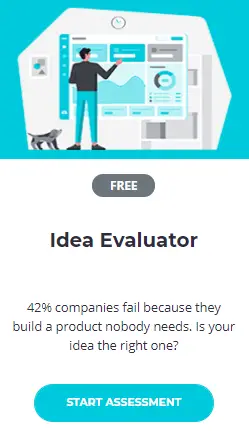
Partha Chakraborty
Partha Chakraborty is a venture capitalist turned entrepreneur with 17 years of experience. He has worked across India, China & Singapore. He is the founder of Tactyqal.com, a startup that guides other startup founders to find success. He loves to brainstorm new business ideas, and talk about growth hacking, and venture capital. In his spare time, he mentors young entrepreneurs to build successful startups.
You may also like

When Does a Company Stop Being a Startup?
- Uncategorized

Why did PepperTap fail?
Leave a comment cancel reply.
Save my name, email, and website in this browser for the next time I comment.
- Market Research
Problem-solution fit vs. product-market fit
- April 25, 2023

Everyone suggests you perform market research so that whatever you build solves a problem. Your product should solve a burning issue and fit market demand . But what do ‘solve a problem’ and ‘cater to the market need’ mean?
This article will explore what it means to achieve problem-solution fit and product-market fit. We will also explore the differences between the two.
What is a problem-solution fit?
You must have read about achieving product-market fit earlier, but there need to be more aware of the importance of having a problem-solution fit.
Problem-solution fit defines the relationship between the problem you are trying to solve (through your product) and the solution. It is about the bridge between the problem and the product (solution) you are trying to build. The problem-solution fit is all about finding a problem and finding different options to solve it in a resourceful way.
Finding a problem-solution fit is important for the business ideation or conceptualization process. It defines if you have the right technology, talent, knowledge, and mindset to build the solution. When chasing the problem-solution fit, you should:
- Identify if you are solving a real problem (and not a notional problem);
- Explore if there is a viable market for that solution (solution can be monetized);
- Gather the resources, knowledge, skillsets, and talent required to start working on the solution.
Problem-solution fit is not about just your product/service and the audience’s pain point. It is a broader metric that defines if a solution is possible to the problem at hand. PSF is about finding answers to the following questions:
- Is the prospect annoyed or frustrated by the problem?
- How confident are you in solving a ‘real’ problem?
- Are there any challenges in solving the problem?
- Can you look for a unique perspective that might not be so obvious in solving a problem?
What is product-market fit?
Product-market fit is about catering to the market demand or needs of the customer. Fundamentally, it is about listening to the voice of your customer, capturing their needs/pain points, and building products based on their needs.
In the simplest terms, product-market fit is the bridge between what you are building and your audience’s needs. As a contract to problem-solution fit, this metric gives more weightage to the audience and their demands than the ‘general problems’ and their solution.
Product-market fit comes later in the entrepreneurial journey when you seek validation for your product. It is about delivering value to the customers and meeting market expectations.
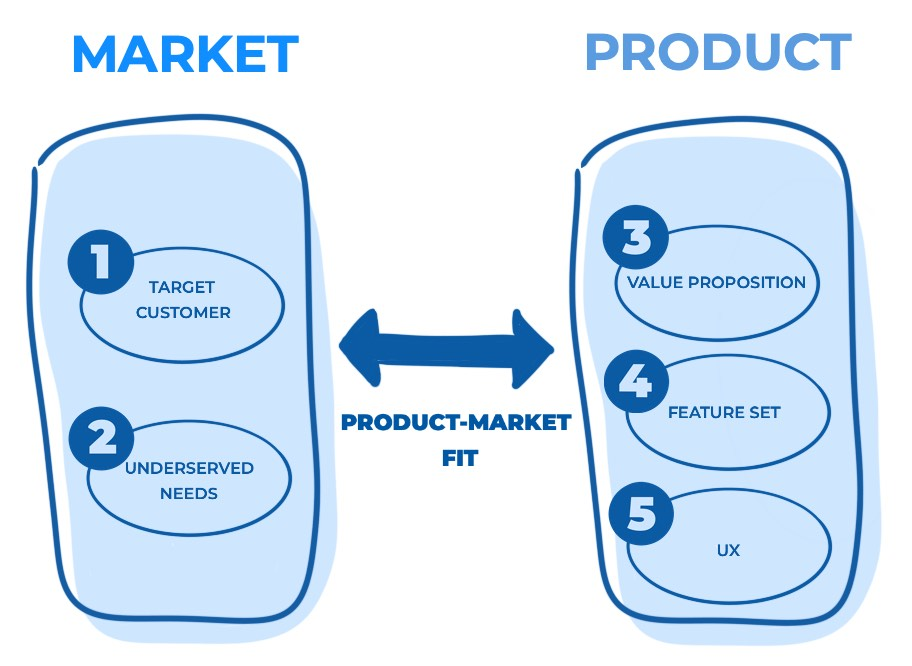
Differences between problem-solution fit and product-market fit.
Building a startup or a small business comes with a lot of challenges. Beyond the common problems like lack of capital, idea validation, and finding customers, there are a million other things you have to take care of daily.
Problem-solution and product-market fit help you manage many everyday entrepreneurial problems at different stages of a startup journey.
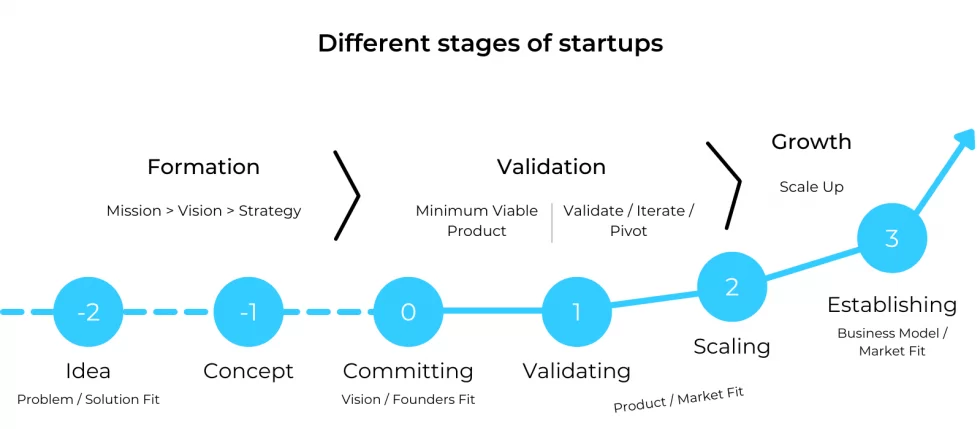
While both are important, some glaring differences exist between problem-solution and product-market fit. The most evident is the stage during which problem-solution and product-market fit are pursued. Here are some critical differences between product-market fit and problem-solution fit in a more general sense.
Problem-Solution Fit
Here are the specifics for problem-solution fit:
- Identifies a specific problem or pain point and corresponding solution;
- Focuses on creating a viable solution to a particular problem of the customer;
- Achieved using insights from one-on-one interviews, in-person surveys, and other qualitative methods;
- Helps define the initial target market, positioning, and competitive edge of the product.
Product-Market Fit
Here are the specifics for product-market fit:
- Powers product discovery cycle based on the needs and demands of the audience;
- Helps create a product that meets the exact needs of the target audience;
- Gathers continuous feedback to develop and improve a product for maximum scalability;
- PMF research happens using a mix of qualitative methods and quantitative metrics like conversion rate, retention rate, etc.
Product-market fit is mainly a tool for validating and scaling a business. Product-solution fit is critical during the ideation stage of the business to gauge viability. Now, here’s a comparison table between the two:
Problem-solution Fit vs. Product-market Fit
Drive product-market & problem-solution fit using gapscout. .
Your audience or customers stays at the heart of whatever you are chasing — product-market fit or problem-solution fit. You must keep in touch with your potential customers at every step of your journey.
So, why not put customer insights on autopilot by scanning online reviews about your products, your competitor’s products, and other brands in the market using GapScout?
GapScout tracks online reviews based on your requirements and brings the latest customer insights and AI -powered sentiment analysis to help you make data-driven and customer-centric decisions at every stage of your startup journey.
You may also like:
- Product-market fit best practices
Ready to Automate Your Market Research? Get exclusive access to GapScout prior to release!
Share this:
The best in market research.
Market research tips & tools sent to your inbox.
By clicking Subscribe, you agree to our Terms and Conditions.
Popular Articles

10-step conversion strategy proven to make you money

Simple 5-step market research process

Understanding voice of customer services
Email us: [email protected] Made with ♥ in sunny California
- Legal Policies
Sign up for early access here!
ⓒ 2023 GapScout. All rights reserved.

Get Early Access!
Sign up to get early beta access to GapScout before it becomes publicly available!
We use cookies to give you the best possible experience on our website.
Sequoia’s Jess Lee explains how early-stage startups can identify product-market fit

Founders at the early stages of building their startups may have already created a strong solution, identified a gap in the market, or may simply have an inescapable and driving motivation to build their own business. Ideally, they have a good combination of all three. But do they have product-market fit? And what actually is product-market fit, anyway?
The investors at Sequoia, one of the world’s biggest venture capital firms, have come up with a very handy framework to answer those two questions. It distills the landscape into three archetypes.
“Hair on Fire” roughly means that your startup addresses an urgent problem. A security startup, for example, might fit here, especially if it can win initial business on the back of parachuting in to fix a breach or other problem already in progress. Or, think of the wave of companies that offered services to businesses and users when they were suddenly sheltering in place and working from home during the peak of COVID-19.
“Hard Fact” translates as a startup that solves an existing problem better than what’s already out there. Square, which emerged as a new point of sale product in a seemingly old and saturated market, is a good example of this.
Lastly, “Future Vision” relates to deep tech, moonshots and products out of left field. These would include quantum startups, but also those building flying cars or even autonomous vehicles that would ply our roads (or any of the tech that will be needed to make such vehicles).
Each of these archetypes will have its own customer mindset, competitive market status, opportunity/general product goals, challenges, examples of those who got it right and those that did not and so on. Sequoia partner Jess Lee, a specialist in early-stage investing, gave a big talk on the concept at TechCrunch’s Early Stage event in Boston in April. Sequoia has written about the framework here , too.
In sum, the theory goes like this: Startups all, more or less, fit into one of these three archetypes, so identifying which archetype a company fits in can help it focus and develop.
Sequoia is confident enough of the structure that it uses the framework in its Arc program to help early-stage founders focus on how they are building. It also helps the firm evaluate potential startup investments. Beyond that, and just as importantly, founders can lean on an archetype to better anticipate and articulate the challenges and opportunities in their space. That can be helpful for decision-making internally, of course, as well as for fundraising or pitching partnerships or customers.
During her presentation on the framework, Lee said that Sequoia does not have a favored category among the three.
“I think you can create great companies in all those categories,” Lee said. Still, she admitted that certain kinds of companies might find it especially challenging to raise money in the current climate.
For deep tech and moonshots — two common kinds of startups found in the “Future Vision” category — fundraising “was easier in a zero-interest-rate period when there was a ton of capital flowing in,” Lee said. “I don’t know if [those companies] would have been able to raise as much [starting out now] as they had to, to be able to get to where they are now.”
Lee was a co-founder at Polyvore, which combined social mechanics and e-commerce — its users contributed fashion and product clips from around the web and used those products to assemble mood boards, with affiliate marketing underpinning it all. Polyvore was eventually acquired by Yahoo , and she parted ways with it. Yet, that e-commerce and consumer focus has stayed with her, she said, adding that she’s still interested in trying to find new winners in that category despite the challenges of trying to break into the space these days.
“It can still be done,” she said. “I feel like many consumer companies fall in the ‘Hard Fact’ category, and I particularly love working with consumer companies. But you have to be good at both marketing your problem as well as marketing your solution and building this. So it takes a lot to get it right.
“It almost feels like alchemy. I can’t tell you how many founders I’ve met who said, ‘Oh, yeah I was working on Snapchat, too. Like, I had my own version.’ And it sounded like it was similar, but just the right number of details allowed Snapchat to be the one that broke away.”
None of this is to say that the third category, “Hair on Fire,” is exactly easy. “You have to ruthlessly execute,” Lee said. “[You need] so much velocity to stay ahead of everyone.”
Her conclusion drives home one of the most critical aspects of building an early-stage business. “I think there’s a little bit of founder-market fit that goes into each of these product-market fit categories.”
More TechCrunch
Get the industry’s biggest tech news, techcrunch daily news.
Every weekday and Sunday, you can get the best of TechCrunch’s coverage.
Startups Weekly
Startups are the core of TechCrunch, so get our best coverage delivered weekly.
TechCrunch Fintech
The latest Fintech news and analysis, delivered every Sunday.
TechCrunch Mobility
TechCrunch Mobility is your destination for transportation news and insight.
Cruise founder Kyle Vogt is back with a robot startup
Kyle Vogt, the former founder and CEO of self-driving car company Cruise, has a new VC-backed robotics startup focused on household chores. Vogt announced Monday that the new startup, called…

From Miles Grimshaw to Eva Ho, venture capitalists continue to play musical chairs
When Keith Rabois announced he was leaving Founders Fund to return to Khosla Ventures in January, it came as a shock to many in the venture capital ecosystem — and…

Anthropic is expanding to Europe and raising more money
On the heels of OpenAI announcing the latest iteration of its GPT large language model, its biggest rival in generative AI in the U.S. announced an expansion of its own.…

TechCrunch Space: You rock(et) my world, moms
If you’re looking for a Starliner mission recap, you’ll have to wait a little longer, because the mission has officially been delayed.
Apple iPad Pro M4 vs. iPad Air M2: Reviewing which is right for most
Apple devoted a full event to iPad last Tuesday, roughly a month out from WWDC. From the invite artwork to the polarizing ad spot, Apple was clear — the event…

GV’s youngest partner has launched her own firm
Terri Burns, a former partner at GV, is venturing into a new chapter of her career by launching her own venture firm called Type Capital.

ChatGPT’s new face is a black hole
The decision to go monochrome was probably a smart one, considering the candy-colored alternatives that seem to want to dazzle and comfort you.

Apple and Google agree on standard to alert people when unknown Bluetooth devices may be tracking them
Apple and Google announced on Monday that iPhone and Android users will start seeing alerts when it’s possible that an unknown Bluetooth device is being used to track them. The…

OpenAI’s ChatGPT announcement: Watch here
The company is describing the event as “a chance to demo some ChatGPT and GPT-4 updates.”

GM’s Cruise ramps up robotaxi testing in Phoenix
A human safety operator will be behind the wheel during this phase of testing, according to the company.

OpenAI debuts GPT-4o ‘omni’ model now powering ChatGPT
OpenAI announced a new flagship generative AI model on Monday that they call GPT-4o — the “o” stands for “omni,” referring to the model’s ability to handle text, speech, and…

Featured Article
The women in AI making a difference
As a part of a multi-part series, TechCrunch is highlighting women innovators — from academics to policymakers —in the field of AI.

White House proposes up to $120M to help fund Polar Semiconductor’s chip facility expansion
The expansion of Polar Semiconductor’s facility would enable the company to double its U.S. production capacity of sensor and power chips within two years.

Google’s 3D video conferencing platform, Project Starline, is coming in 2025 with help from HP
In 2021, Google kicked off work on Project Starline, a corporate-focused teleconferencing platform that uses 3D imaging, cameras and a custom-designed screen to let people converse with someone as if…

Instagram expands its creator marketplace to 10 new countries
Over the weekend, Instagram announced it is expanding its creator marketplace to 10 new countries — this marketplace connects brands with creators to foster collaboration. The new regions include South…
Google I/O 2024: What to expect
You can expect plenty of AI, but probably not a lot of hardware.

Google I/O 2024: How to watch
The keynote kicks off at 10 a.m. PT on Tuesday and will offer glimpses into the latest versions of Android, Wear OS and Android TV.

Aplazo is using buy now, pay later as a stepping stone to financial ubiquity in Mexico
Four-year-old Mexican BNPL startup Aplazo facilitates fractionated payments to offline and online merchants even when the buyer doesn’t have a credit card.

Vote for your Disrupt 2024 Audience Choice favs
We received countless submissions to speak at this year’s Disrupt 2024. After carefully sifting through all the applications, we’ve narrowed it down to 19 session finalists. Now we need your…

Healthy growth helps B2B food e-commerce startup Pepper nab $30 million led by ICONIQ Growth
Co-founder and CEO Bowie Cheung, who previously worked at Uber Eats, said the company now has 200 customers.

Booking.com latest to fall under EU market power rules
Booking.com has been designated a gatekeeper under the EU’s DMA, meaning the firm will be regulated under the bloc’s market fairness framework.

‘Got that boomer!’: How cybercriminals steal one-time passcodes for SIM swap attacks and raiding bank accounts
Estate is an invite-only website that has helped hundreds of attackers make thousands of phone calls aimed at stealing account passcodes, according to its leaked database.

Permira is taking Squarespace private in a $6.9 billion deal
Squarespace is being taken private in an all-cash deal that values the company on an equity basis at $6.6 billion.

Buy Me a Coffee’s founder has built an AI-powered voice note app
AI-powered tools like OpenAI’s Whisper have enabled many apps to make transcription an integral part of their feature set for personal note-taking, and the space has quickly flourished as a…

Google partners with Airtel to offer cloud and GenAI products to Indian businesses
Airtel, India’s second-largest telco, is partnering with Google Cloud to develop and deliver cloud and GenAI solutions to Indian businesses.

Women in AI: Rep. Dar’shun Kendrick wants to pass more AI legislation
To give AI-focused women academics and others their well-deserved — and overdue — time in the spotlight, TechCrunch has been publishing a series of interviews focused on remarkable women who’ve contributed to…

A reckoning is coming for emerging venture funds, and that, VCs say, is a good thing
We took the pulse of emerging fund managers about what it’s been like for them during these post-ZERP, venture-capital-winter years.

Workers at a Maryland Apple store authorize strike
It’s been a busy weekend for union organizing efforts at U.S. Apple stores, with the union at one store voting to authorize a strike, while workers at another store voted…

Alora Baby aims to push baby gear away from the ‘landfill economy’
Alora Baby is not just aiming to manufacture baby cribs in an environmentally friendly way but is attempting to overhaul the whole lifecycle of a product

Go on, let bots date other bots
Bumble founder and executive chair Whitney Wolfe Herd raised eyebrows this week with her comments about how AI might change the dating experience. During an onstage interview, Bloomberg’s Emily Chang…


IMAGES
VIDEO
COMMENTS
Problem-solution fit is a term used to describe the point validating that the base problem resulting in a business idea really exists and the proposed solution actually solves that problem. The problem-solution fit is when you-. Validate that the problem exists: When you validate your problem hypothesis using real-world data and feedback.
Problem-Solution Fit (PSF) is when founders have discovered a deep customer problem in an underserved market. This stage is generally very early and often in the seed or pre-seed stage. Take Airbnb as an example. The founders identified a problem when they started renting out their rooms to earn extra money.
Summary. Problem-solution fit (PSF) is the first major milestone of a new product where initial customers have installed a solution to solve a specific problem. Proving that customers care enough to pay for the solution is the critical outcome for tech CEOs to achieve.
Problem/Solution Fit (not Product/Market Fit) is the first significant milestone of a startup. Getting to product/market fit (the inflection point in the hockey stick curve) takes roughly two years, and 80% of products never find it. At this rate, not counting downtime between ideas, finding a good idea could take up to 10 years! ...
The Problem-Solution Fit canvas is based on the principles of Lean Startup, LUM (Lazy User Model) and User Experience design. It helps entrepreneurs, marketers and corporate innovators identify…
The Problem-Solution Fit canvas is based on the principles of Lean Startup, LUM (Lazy User Model) and User Experience design. It helps entrepreneurs, marketers and corporate innovators identify behavioral patterns and recognize what would work and why. It is a template to help identify solutions with higher chances of solution adoption, reduce ...
There are several steps you need to take to reach Problem/Solution fit. You have to: Prove there is a problem worth solving. Prove which customer type is experiencing that problem. Optional: Prove what your customer is trying to achieve. Prove your solution can solve your customer's problem. 1.
Problem-Solution Fit is achieved during the pre-launch phase. This means that before the actual product is launched, a startup needs to achieve Problem-Solution Fit. A startup searches for Problem-Solution Fit with the help of iterations they apply on their MVP. Problem-Solution Fit is a binary proposition, while Product-Market Fit is a spectrum.
Problem-Solution Fit is a critical concept in entrepreneurship and product development. It represents the degree to which a proposed solution effectively addresses a specific problem or pain point faced by a target audience. Achieving Problem-Solution Fit is an essential milestone on the path to building a successful product or business.
Problem solution fit is the process of identifying a customer problem and developing a solution that meets their needs. Achieving problem-solution fit involves identifying the target market, validating the solution, and building the business model. The lean startup approach emphasizes customer discovery and validation experiments to minimize ...
Knowing your competition is an important part about knowing how customers currently solve a problem. Usually competition for a startup falls into 3 categories: Existing product. Combination of 2-3 products. Jury-rigging a solution. The type of existing competition will depend on the market and the product.
The Customer Development Process contains 3 kinds of Fits: Problem-Solution Fit. Product-Market Fit. Business Model-Market Fit. Different Stages of Startups. What is a Problem-Solution Fit? The Problem-Solution Fit simply means that you have found a problem with your customer and that the solution you have realized for it actually solves the ...
Problem-solution fit is a concept often discussed in the context of startups and innovation. It refers to the alignment between a specific problem faced by a target customer segment and the solution or product that a business offers to address that problem. Achieving problem-solution fit is crucial in the early stages of product development and validation.
This is not a checklist. Each type is a way to look at problem-solution fit, relating to the maturity of your startup. See these 4 types as buckets that fill up with evidence over time. Your reasoned problem-solution fit bucket will fill up pretty fast from the start.. When you start prototyping MVPs and landing pages, your perceived and demonstrated problem-solution fit will start to slowly ...
Key aspects of problem-solution fit include: 1. Identifying and deeply understanding your target customer's pain points and needs. 2. Developing a product or service that addresses those pain ...
A problem-solution-fit occurs if a startup has proved both: 1) that there is a 'problem worth solving' for one or more clearly defined customer groups, and 2) that there is evidence that these customer groups would consider the value proposition of the solution the firm proposes. Having reached problem-solution fit means that you've ...
Determining problem/solution fit is crucial during product development and early customer testing stages. In contrast, product/market fit should be evaluated over a longer period after the product has been launched and is being actively sold. Both problem/solution fit and product/market fit can be evaluated through customer feedback, usage data ...
The term problem-solution fit refers to the match between a proposed solution and the problem or an unmet need it is trying to address. Problem-solution fit precedes product-market fit. The first indication of whether an idea will be successful is typically based on finding a problem-solution fit. To decide whether there is a fit there must be ...
A product-market fit is when a startup has validated that there is a market for its product. A product-market fit is important because it means that the startup has a real chance of building a sustainable business. A problem-solution fit is a necessary but not sufficient condition for a product-market fit. In other words, startups need to have ...
As a contract to problem-solution fit, this metric gives more weightage to the audience and their demands than the 'general problems' and their solution. Product-market fit comes later in the entrepreneurial journey when you seek validation for your product. It is about delivering value to the customers and meeting market expectations.
Step 1. Ideate candidate solutions. The goal is to end up with 5-10 'mini propositions' that are all totally different. These will be your 'probes' into different parts of the solution ...
Problem-Solution Fit — developing value proposition around the price. The path of achievement that the entrepreneur must pursue is known as "Customer Development" (defined by steve blank ...
A problem-solution fit helps make sure that your initial hypotheses have been validated (proven right); and that your solution — the one you're about to build— does solve a problem worth solving. A problem you initially assumed your customers have, one that you need to verify whether it's one they care to solve 😉.
In sum, the theory goes like this: Startups all, more or less, fit into one of these three archetypes, so identifying which archetype a company fits in can help it focus and develop. Sequoia is ...